
We live in a connected world. Why should your Trail Camera be any different? Our proven HyperFire 2™ camera is now 4G LTE Cellular Enabled, allowing you to receive images from your camera almost anywhere in the world via email or through our Mobile App for Android® or iOS®. Cost effective data plans utilizing Verizon® or AT&T® are available directly through RECONYX and start at only $5 per month, with no long term contracts. With our Mobile App, you can create a custom cellular plan, manage images and check status or change camera settings from anywhere. All RECONYX® HyperFire 2™ Cameras are Made in the USA and are backed by a full 5 year warranty. RECONYX®, See What You’ve Been Missing…






















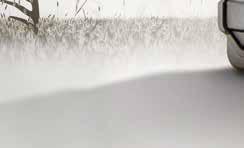














MADE IN USA @RECONYX_CAMERAS
HYPERFIRE 2 4G LTE CELLULAR RECONYX.COM
FEATURES
32
HUNTING TACTICS
THE PERFECT AMBUSH
Strategically growing small no-plow ambush plots inside prime-time locations surrounded by thick cover and close to big-buck bedding areas can place you in a target-rich environment this season.
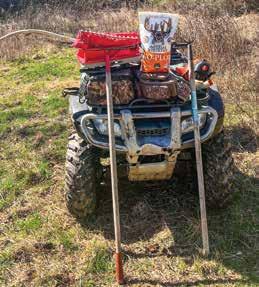
❚
By Travis Faulkner
DEPARTMENTS
OFFICERS AND STAFF
WILLIAM COUSINS / VP/GM WHITETAIL INSTITUTE

BRANDON SELF / DIRECTOR OF OPERATIONS
DAWN MCGOUGH / BUSINESS OPERATIONS MANAGER
JOHN WHITE / INSIDE SALES MANAGER
TYLER HOLLEY, CHASE DUNCAN,
DANE RUSSELL / INSIDE SALES REPRESENTATIVES
DREW GILKERSON / NATIONAL SALES MANAGER
CLARE HUDSON / TERRITORY MANAGER, NORTHEAST
JOE THOLE / TERRITORY MANAGER, MIDWEST
DR. CARROLL JOHNSON, III,
DR. JOYCE TREDAWAY / AGRONOMIST AND WEED SCIENTISTS
JODY HOLDBROOKS / WILDLIFE BIOLOGIST
JON COONER / MARKETING/COMMUNICATIONS MANAGER
BRIAN LOVETT/ WHITETAIL NEWS SENIOR EDITOR
SCOTT BESTUL / EDITOR
GERALD ALMY, KRIS KLEMICK, MATT HARPER, MARK OLIS / FIELD EDITORS
MICHAEL VEINE, DARRON MCDOUGAL, JOSH HONEYCUTT, GORDY KRAHN / CONTRIBUTING WRITERS
WADE ATCHLEY / ATCHLEY MEDIA ADVERTISING DIRECTOR
❚
ANNUALS TO THE RESCUE
Perennials are a cornerstone of food plot programs, but during certain conditions, annuals can solve tricky management riddles.
❚ By Matt Harper FOOD PLOTTING

HUNTING STRATEGIES
20
SANCTUARY SENSE
Everyone talks about creating sanctuaries, but few folks know how to do so effectively. Follow this common-sense approach to managing safe spots for deer on your property.
By Scott Bestul
MAKING SMALL FARMS HUNT BIGGER
Don’t have unlimited ground? Try these 25 tips to hold more deer and have better hunting on small properties.
By Josh Honeycutt
SUCCESS 28
HOME-GROWN HUNTING
There’s a special sense of accomplishment that comes from dropping the hammer on a buck you’ve worked hard for — especially if you do it on your own land.
❚ By Gordy
Krahn
HUNTING LIFESTYLE 32
CELEBRITY PROFILE: CHIPPER JONES
Here’s the skinny on the Major League Baseball Hall of Fame star’s deer hunting lifestyle.
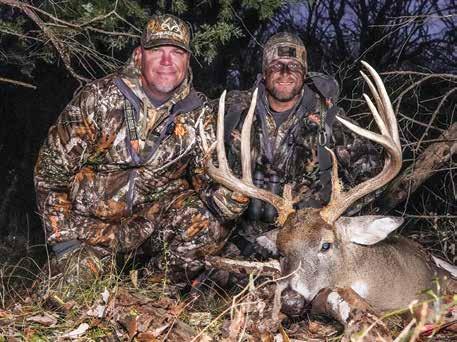

❚ By Darron McDougal
38
FRESH EYES: NEW LOOKS AT OLD PROPERTIES
Here are five ways hunters and landowners can completely relearn their hunting land.
HUNTING STRATEGIES DOWN AND DIRTY WITH MOCK SCRAPES
One of the quickest ways to locate, pattern and even condition mature buck activity is to use mock scrapes throughout each transitional phase of fall. Here’s how you can maximize this high-impact strategy.
❚ By Travis
Faulkner
FOOD PLOTTING
46 POWER OF THE PLOT
The impact food plots have is immeasurable, and thanks to more than three decades of Whitetail Institute experience and leadership, the power of the plot is stronger than ever.
❚ By
Kristopher M. Klemick
A Q&A WITH WHITETAIL INSTITUTE APP DEVELOPER PAUL POTTER

Have you heard about Whitetail Institute’s new app, PlotPerfection? Find out how it can make you a better food plotter. ❚ By Darron
McDougal
54
The Next Level consulting crew will examine proven tactics to maximize your land’s potential.
❚ By Jody Holdbrooks
Vol. 33-2 | Whitetail News 3 IN THIS ISSUE ■ ISSUE 33-2
HUNTING TACTICS 24
MANAGEMENT 51
10 4 | A MESSAGE FROM THE GM 6 | SCIENTIFICALLY SPEAKING 8 | ADVANCED FOOD PLOTTING 56 | MY TROPHY WHITETAILS 66 | BACK-40 NOTEBOOK 10
42
❚ By Josh Honeycutt MANAGEMENT
16
MANAGEMENT LET US HELP YOU GET THE MOST FROM YOUR PROPERTY
CREATING AN EDGE THIS SEASON
Fall planting season is quickly approaching, which means now is the time to ensure you’ll have the upper hand when hunting season begins. For a competitive edge over the incredible senses of a white-tailed deer, I’d encourage you to think about that word — edge. A food plot edge, to be more precise. As hunters and land managers, we enjoy seeing deer in food plots, especially during our time in the stand, and an edge can seal the deal for a plot’s productivity during daylight.
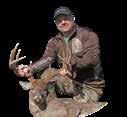
In a sense, a food plot edge is to deer what the front door and lobby to our favorite restaurant is for people; there’s comfort in being there. It’s a place where deer feel safe knowing there’s cover surrounding the buffet they’re about to enjoy. A soft transition zone between the forest and a food plot will greatly enhance your hunting experience and provide excellent habitat for deer, turkeys and many other critters.
A natural, soft edge is created by native brush, vines, grasses and forbs. If you don’t have at least several feet of this weedy brush between your food plots and the forest, you need to begin building an edge. It’s easy to do whether you’re planning a new plot or actively working the ground. Here are three tips to keep in mind.
Pure Attraction is by far my favorite, but any Whitetail Institute annual mix planted along the perimeter of a plot will start the process of creating a soft edge. Shoot for at least a 10- to 12-foot-wide strip if you can, but 15 to 30 feet is best. Next, when spreading fertilizer or lime, always let the mix reach beyond the plot slightly into the woods. The soil in this area will benefit from the extra boost since it isn’t actively worked, giving your edge an edge. And finally, when spring and summer maintenance season rolls around, leave the buffer edge alone. Don’t spray or mow it. You will find through time that this newly created habitat increases the variety of natural vegetation, as well as the number of deer using your food plot during daylight. Don’t hesitate to call us if you have questions along the way. Our team is here to help you be successful creating premier habitat for wildlife and future generations. As John James Audubon famously stated, “A true conservationist is a man who knows that the world is not given by his fathers, but borrowed from his children.”
 — William
— William
William Cousins~VP/GM Whitetail Institute
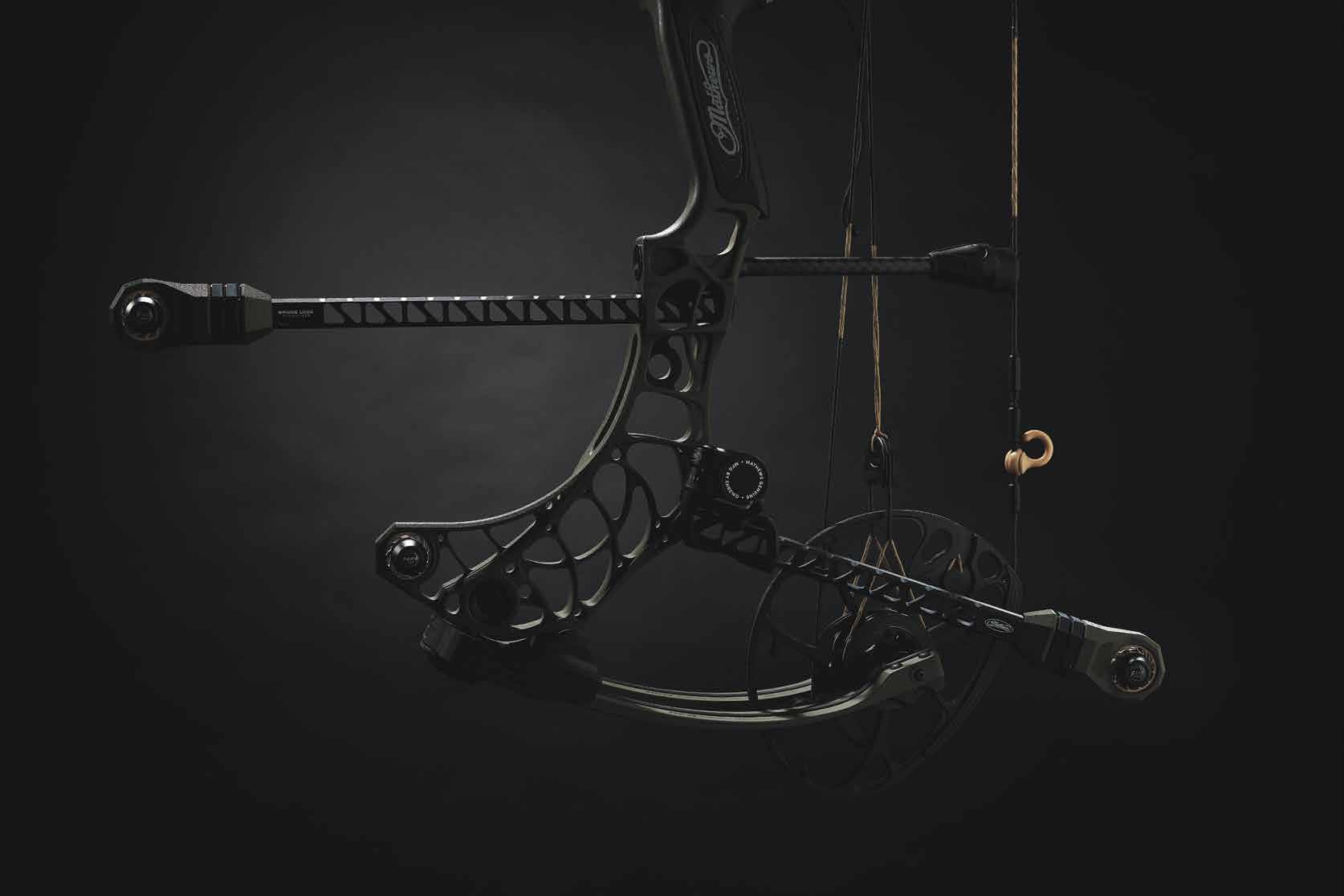
COMMAND
I
LEARN MORE ABOUT THE 2023 PHASE4 AT MATHEWSINC.COM
T HE Q U
ET
SCIENTIFICALLY SPEAKING
■ by W. Carroll Johnson III, Ph.D. – Agronomist and Weed Scientist
MOWING:
AN INDISPENSABLE TOOL IN MANAGING CLOVER

Early on, I learned of many experienced food plotters mowing clover to stimulate production of new palatable leaves and generally freshen their food plots. Admittedly, I was leery at first. At that time, I considered mowing to be a source of stress to clover, and I still believe that’s the case when clover is mowed haphazardly. Just like mowing a lawn, there is a right way to mow clover and a wrong way. Through time, I became a bit more comfortable with mowing as a clover management tool. Despite the widespread acceptance and success of mowing as a management tool, every aspect of mowing clover appeared to be anecdotally based on trial and error. We can do better than that.
To add more science and less guesswork to the practice of mowing clover, let’s review scientific agricultural literature. References were scarce, and most were decades old. The best research report that systematically evaluated various mowing regimes and quantified effects on ladino clover growth was a study conducted in the late 1940s by the University of Wisconsin and published in the prestigious Agronomy Journal. At that time, clover was a major crop in Wisconsin and served the dairy industry, and this research was highly relevant for that segment of
agriculture. I will try to summarize those results and interpret the important points in the context of managing clover in food plots.
To set the stage for this discussion, we need a brief description of ladino clover as a plant. Ladino clover is a perennial, meaning individual plants can survive for multiple years. Early in the life of newly seeded ladino clover, a primary stem forms. The primary stem grows upright but remains short with many joints, called nodes, that are tightly spaced. About six to eight weeks after emergence, the primary stem quits growing, and lateral stems, called stolons, originate from nodes on the primary stem. Stolons of ladino clover radiate out from the primary stem and grow along the soil surface. Ladino clover leaves, and later the flowers, are produced on stolons. Stolon health is crucial for ladino clover to survive winter. Every management practice in a well-managed ladino clover food plot promotes healthy stolons, which are necessary to produce abundant leaves for grazing and set the stage for survival of the clover plants for several years.
The basic premise of the Wisconsin study was that mowing mimics grazing by cattle and cutting for hay. The research team studied all possible combinations of two mowing heights (1 inch
6 Whitetail News | Vol. 33-2
Research shows that mowing clover can benefit a plot — provided it’s done correctly.
and 3-½ inches) and three frequencies of summer mowing (two, four and six mowings per summer). Data collected included clover forage yield in summer, stolon dry weight in autumn, total carbohydrates in stolons, winter kill and degree of weediness. The experiments were repeated for two years.
Study the tables of data from this research trial. You would think that the best combination of mowing height and frequency would produce the greatest total forage yield during summer. If that were the case, mowing clover at the lower setting six times during summer would be ideal. However, that assumption is highly flawed because clover survival the next winter is not considered. After all, an advantage of ladino clover as a forage is
EFFECTS OF SUMMER MOWING HEIGHT AND FREQUENCY ON LADINO CLOVER FORAGE YIELDS AND AUTUMN STOLON WEIGHT1.
its longevity through several years. Multiple summer mowings at the 1-inch cutting height produced more total clover herbage compared to less intensive mowing. However, mowing six times at 1 inch stressed clover and produced carbohydrate-depleted stolons in autumn, which affected winter survival. To further complicate matters, stressed clover from harsh mowing was unable to adequately compete with weeds, which further reduced clover productivity — a domino effect. I can say with complete confidence that most serious weed problems in clover are related to a weakened and poorly competitive clover stand. Stressed clover from harsh mowing and heavy weed infestations further reduced survival potential. Nothing was gained long-term by harshly mowing clover six times throughout summer. Clover needed time to recover between mowings.
The results of the research project offer clear recommendations for using mowing as a clover management tool in food plots. First, mow to a height no lower than 3-½ inches above the soil surface. Second, mow clover no more than four times per summer. Third, environmental factors affect the response of clover to mowing, particularly drought. Remember, mowing will stress clover, and that trauma will be amplified by drought. Although mowing is a useful management tool to stimulate clover foliar growth in food plots, too much of a good thing can be adverse. Be strategic with mowing.
and H.L. Ahlgren. 1950. Effect of height and frequency of cutting on the productivity and survival of ladino clover (Trifolium repens L.). Agron. J. 42:230-235.
2Total forage yield is the sum of each yield when mowed throughout summer.
EFFECTS OF SUMMER MOWING HEIGHT AND FREQUENCY ON STOLON CARBOHYDRATES, LADINO CLOVER WINTER KILL AND WEED INFESTATION, 19481.
The study identified the best combination of mowing height and the frequency of mowing. It was conducted under a ladino clover production system to serve dairy herds, and the results are directly applicable to managing clover in food plots. There are a couple of differences between clover grown in dairy pastures versus food plots that should be considered.
The first factor might be the limitations of mowers used in food plots to accurately control cutting height. Err on the side of caution when setting mowing height, and avoid scalping caused by mowing too low.
The second difference is the confounding effect of overgrazing by deer. Pastures on a dairy will be fenced, and cattle grazing — which mowing mimics — is controlled, which allows clover enough time to recover after cattle are moved. In contrast, heavy deer grazing is essentially uncontrollable in food plots, and that will affect clover recovery from mowing. In fact, heavy deer grazing might eliminate the need to mow clover. An exclusion cage will indicate the degree of deer grazing and help gauge the need to mow during heavily grazed conditions.
1Tesar, M.B. and H.L. Ahlgren. 1950. Effect of height and frequency of cutting on the productivity and survival of ladino clover (Trifolium repens L.). Agron. J. 42:230-235.
2Carbohydrates in stolons were measured in the autumn after summer mowing and are an indication of potential winter survivability.
Consider mowing clover to stimulate the production of new leaves to be a strategic production practice carefully conducted to benefit the forage crop without creating excess stress. Pay particular attention to weather conditions and the overall health of the crop. Recreational mowing on a whim might not be necessary and could be detrimental to the health and longevity of clover.
Vol. 33-2 | Whitetail News 7
MOWING FREQUENCY MOWING HEIGHT TOTAL FORAGE YIELD (LBS./A)2 CLOVER STOLON WEIGHT (G/100 IN.2) 1947 1948 1947 1948 TWO SUMMER MOWINGS 1 inch 4,140 3,480 10.6 5.3 3-½ inches 3,250 2,250 11.5 5.3 FOUR SUMMER MOWINGS 1 inch 6,150 4,840 7.3 2.2 3-½ inches 4,840 2,900 9.1 5.9 SIX SUMMER MOWINGS 1 inch 4,710 4,350 4.3 1.5 3-½ inches 4,280 3,020 9.4 5.1 1Tesar, M.B.
MOWING FREQUENCY MOWING HEIGHT CARBOHYDRATES (%) 2 CLOVER WINTER KILL (%) WEED INFESTATION (LBS./A) TWO SUMMER MOWINGS 1 inch 24 46 568 3-½ inches 24 46 494 FOUR SUMMER MOWINGS 1 inch 21 71 719 3-½ inches 25 41 250 SIX SUMMER MOWINGS 1 inch 13 57 631 3-½ inches 22 35 350
ADVANCED FOOD PLOTTING
State-of-the-art tips and techniques for high-level land managers
■ by Joyce Allison Tredaway, Ph.D. – Agronomist and Weed Scientist
Slay is an excellent choice for winter annual broadleaf weeds. Just make sure to follow best practices when using it.
SLAY FOR COOL-SEASON WEED CONTROL
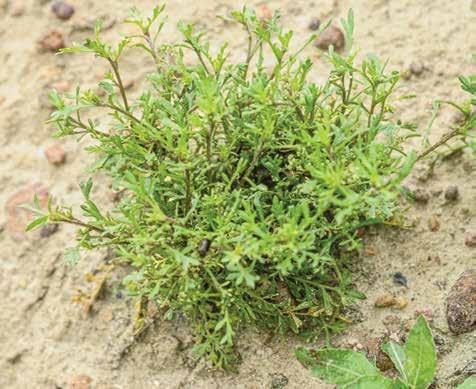
The 1980s can be remembered for many things. Ronald Reagan was in office, hair and clothing styles were terrible, and for weed scientists, new chemistries of herbicides were discovered.
Until that time, herbicide applications were given in large quantities per acre, such as pounds per acre, or gallons or quarts per acre. With the discovery of two classes of herbicides, imidazolines and sulfonylureas, herbicides could be applied in fluid ounces per acre and ounces per acre. That meant cheaper packaging, less environmental load and much less water. It also brought many new herbicides that controlled weeds in a different way. Previously, most herbicides only controlled broadleaf weeds and small-seeded grasses. After the discovery of imidazolines and sulfonylureas in the 1980s, the weed-control spectrum expanded to a much larger range of broadleaf weeds, large and small-seeded grasses, and nutsedges.
Imidazolines work very slowly in a plant. They inhibit the biosynthesis of branched-chain amino acids (valine, isoleucine and leucine). They specifically inhibit the acetolactate synthase, or ALS, enzyme. That’s part of why these herbicides are incredibly safe. Humans don’t have the ALS enzyme associated
with the production of branched-chain amino acids.
One of the imidazolines was imazethapyr, which deer hunters know as Slay, a low-use herbicide that provides pre-emergence and post-emergence activity for some grass weeds and broadleaf weeds. Most hunters associate Slay with spring applications, but it offers excellent activity on several problematic winter annual broadleaf weeds, many of
which are in the brassica family, which needs further explanation.
The brassica family is composed not only of weeds but also many desirable crops, including food plots. Plants in the brassica family are cool-season plants, which means they germinate in autumn and flower and produce seed in late-winter and early spring. In Northern latitudes, plants in the brassica family might be present in early summer. Some criti-

8 Whitetail News | Vol. 33-2
■ Swinecress is a brassica weed for which Slay provides post-emergence control.
cal characteristics of plants in this family include deeply lobed leaves and yellow or white flowers that have four petals.
Cool-Season Annual Weeds
The brassicas are a large family of weeds. When applied at 4 fluid ounces per acre, Slay provides excellent control of brassicas, if applied when weeds are 3 inches or less. Cool-season annual weeds in the brassica family include yellow rocket, shepherd’s purse, swinecress, tansy mustard, and wild, tumble and black mustards. Common chickweed is a winter annual that emerges in fall and early winter and dies out in spring. Although Slay is labeled for use only on alfalfa and clover, food plot mixtures containing brassicas — such as Beets and Greens, Bow Stand, Pure Attraction and Ravish Radish — have plant-back restrictions to plots previously treated with Slay. Slay should not be applied to these crops: turnips, rape/canola, kale,
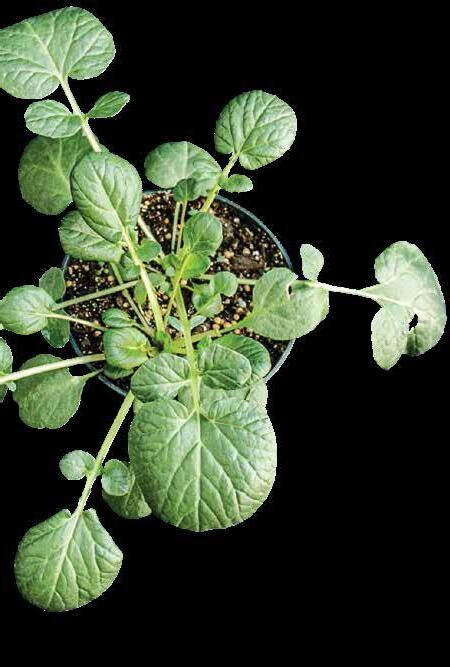
IMPERIAL WHITETAIL SLAY
■ Selective broadleaf herbicide.
■ 4 ounces treats 1 acre; 1 pint treats 4 acres.
■ Slay is field-tested and has proven effective for controlling broadleaf weeds in clover or alfalfa fields. Slay can be easily applied with a four-wheeler or tractor sprayer. Using the right herbicide can eliminate the need for replanting as often and ensure that your food plots have maximum longevity.
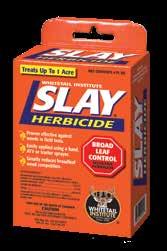
cabbage, broccoli, radish, collards or cauliflower. Proper planning of rotational guidelines with various food plot seeds must be considered if you’re planning to apply Slay on clover and then plant another product.
Optimum Application Timings

We often receive questions regarding winter annuals when they’re flowering. That’s much too late to spray a herbicide, because winter annuals must be treated when they are very small. It should be applied when the weeds are less than 3 inches tall. Take notes of the areas where you see winter annuals. If you have a GPS system that lets you mark the areas, that will come in handy for the next autumn. Applications should be targeted in mid-September to early October. However, scouting your food plots is essential because weed emergence differs depending on regions.

Slay Applications
The critical threshold is for daily temperatures to be at least 50 degrees for 10 hours the day of application. Additionally, that temperature threshold needs to also be reached at least 48 hours before the application to ensure that weeds are actively growing when the herbicide is sprayed. A crop oil such as Surefire Crop Oil Plus must be added to Slay applications.
Slay is an excellent choice for winter annual broadleaf weeds. When you ensure the optimal application timing and temperature threshold, Slay can provide weed control for established food plots to make them an ideal hunting paradise.
Vol. 33-2 | Whitetail News 9
■ This image shows yellow rocket. The picture at right shows wild mustard.
Courtesy of Joseph
M. DiTomaso, University of California –Davis, Bugwood.org
Courtesy of Bruce Ackley, The Ohio State University, Bugwood.org


10 Whitetail News | Vol. 33-2
Heavy-racked bucks with bulldozer-shaped bodies are naturally skittish, wary and super paranoid most of the time. After surviving years of hunting pressure, they become a different animal, and getting close enough to them to pull off a clear shot is like trying to catch a shadow in the dark. However, those shadows slip up sometimes and often prowl around and hide inside thickets. Dense cover often creates a false sense of security that you can take advantage of with the right type of setup and hunting strategies.
Let’s look at how you can create the perfect ambush site with careful planning and a little extra work.
Big Bucks and Thick Cover

Almost any deer hunter worth his salt can tell you that mature bucks and heavy cover go together like grandma’s homemade biscuits and sausage gravy. For good reason, thick, entangled sanctuaries provide safety, browsing opportunities and adequate protection from predators and adverse weather. Even veteran bucks with some nocturnal tendencies will move more during daylight when they have protective cover surrounding them. Unfortunately, however, thickets can be extremely challenging to hunt because of access difficulties, low visibility and limitations for productive setup opportunities.
In many such areas, it’s so thick a rabbit would have trouble navigating through the jungle of briars, tall weeds, blowdowns and undergrowth. The chances of you easing into a mature buck’s seemingly impenetrable hideout without him seeing, hearing or smelling you are fairly low. That’s why they gravitate to those comfort zones, especially during periods of intense hunting pressure. Mature bucks feel somewhat untouchable there, because in most cases, only the outer edges and perimeters of such spots get hunted because of the risks and high probability of bumping deer if hunters go deeper. However, there’s another option, if you’re willing to push the envelope and take a more aggressive approach.

Target the Thick, Ugly Stuff
I’ve spent most of my life chasing whitetails from the rough, rugged Appalachian Mountain country of southeastern Kentucky and Tennessee to the rolling hills of Oklahoma and Kansas and about every point between or around those areas. In doing so, I’ve learned a hard truth: You can’t shoot what’s not there. As a writer, I realize that statement is a double negative, but it’s true. The fastest shooting bow, the best tree stand, high-tech game cameras and the most thought-out game plan won’t make much of a difference if you’re hunting the wrong area.
Vol. 33-2 | Whitetail News 11
■ Crafting smart setups in a big buck’s core daytime area greatly improves your number of shot opportunities.
THE FASTEST SHOOTING BOW, THE BEST TREE STAND AND HIGH-TECH GAME CAMERAS WON’T MAKE MUCH OF A DIFFERENCE IF YOU’RE HUNTING THE WRONG AREA.”
If you want to consistently tag mature bucks, you need to hunt where they live. You must focus on the critical locations where they spend most of their time during daylight, not open areas with minimal cover. Large agricultural fields and clean, open hardwoods are great for providing good visibility, but big bucks generally hit those areas under the cover of darkness. No doubt, those areas are traditionally popular hunting spots, because open locations offer relatively easy access and multiple setup options. Plus, you’ll often get lots of game-camera pics of deer visiting those areas, along with a ton of hot sign. However, most big buck activity there usually occurs well after dark or during the precious few minutes right at daybreak or just before sunset.
In other words, you have a very limited window of opportunity to intercept a shooter from those types of setups. That’s why you need to expand your window and possibilities by going deeper and targeting the thick stuff. Standard field-edge tree stands and open-area
setups can produce during the cruising and chasing phases of the rut or before fronts hit, when deer are actively up and moving. But those critical times are limited. I’ll gladly sacrifice being able to see for 100 yards in every direction to hunt the thick, nasty cover where the big boys spend most of their time.
Plan a Perfect Ambush
As you can imagine, entering, hunting and exiting setups well inside of thickets and dense cover without spooking deer is demanding and requires careful planning. I prefer to go into these areas long before a hunt and lay the groundwork. I’m looking for large-sized deer beds, lots of droppings, super-sized tracks and heavily worn trails, along with rubs and scrapes fresh and old from previous seasons. Figuring out how mature bucks enter those locations, where they seemingly prefer to bed during the day, what they browse on and how they exit are crucial bits of intel you’ll need before planning an ambush.
Next, you’ll need to pinpoint a relatively flat area surrounded by thick cover, but that also has somewhat of a more open canopy where sunlight can reach the ground. You’re looking for a place with decent soil where you can grow a small no-plow ambush plot that’s shade-tolerant. Most important, it must be a location you can quietly access, hunt and exit without disturbing or alarming deer. Knowing exactly how deer enter those thickets, where they generally bed and how they travel to reach and exit those bedding sites will help you choose the best site to plant your plot.

Prepping and Planting Ambush Plots
After you have picked the right area, start prepping your entry and exit routes and the ambush plot site. That usually requires a hand-saw, clippers and even a weed-trimmer to clean out trails where you can silently sneak in and out under the radar. It might also be necessary to use an extendable-pole handsaw or chainsaw to open some of the canopy by
Set Your Sights on Brillion Farm Equipment
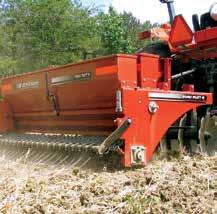
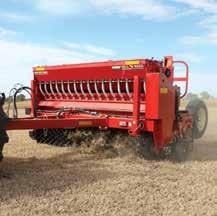

Brillion Farm Equipment offers a full-line of equipment suited for food plot enthusiasts. The Food Plot Seeder is an all-in-one solution for food plots handling seedbed preparation, seed metering and placement, as well as seedbed finishing. Brillion’s ground driven Till ‘N Seed® shreds existing food plots and plants numerous food plot seed mixtures. All products are backed by Brillion’s years as an industry leader in the Seeder and Pulverizer industry!

www.brillionfarmeq.com
Brillion, WI 54110 855.320.0373 ©2023 Brillion Farm Equipment www.facebook.com/landollag
Till ‘N Seed® Model BPSBA-8
Food Plot Seeder Model FPSB-6
The Till ‘N Seed is now available in 8’ working widths in pull-type or three-point hitch configurations.
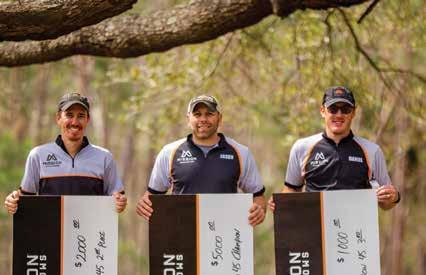
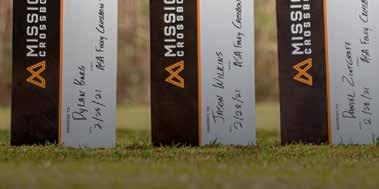


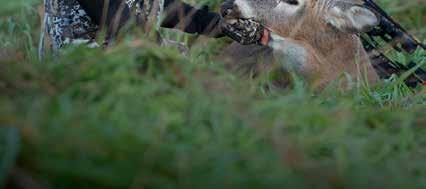


MISSIONCROSSBOWS.COM THE WORLD’S MOST ACCURATE CROSSBOWS. MADE IN THE USA FROM THE FIELD, TO THE PODIUM the SUB-1 SERIES delivers an unmatched shooting experience in the field, or in competition. Discover the World’s most accurate crossbow series at your local Mission Crossbow dealer.
removing overhanging branches that block the most sunlight from reaching the ground. Next, use a metal rake and gardening hoe to remove as much leaf litter, sticks, weeds and other debris as
It’s extremely important to select a high-quality ambush plot blend that does not need lots of sunlight or seedbed work. Imperial No-Plow

cludes specifically selected clovers, brassicas, radishes and other forages that are drought- and cold tolerant without requiring a lot of sunlight or tractor equipment. If your site receives only a few hours of broken or filtered sunlight a day and you can get decent seed-to-soil contact, your ambush plot will establish quickly and grow rapidly. It provides up to nine months of attraction and nutrition without all

After establishing an ambush plot, I era and extended battery pack. This type of long-term surveillance lets me ing and exiting the plot and the best times to hunt it. I don’t have to disturb the area to check camera cards, change batteries or adjust settings, because everything is on my phone. It’s also really convenient and beneficial to check the cell camera for deer activity before approaching the setup to hunt, which
significantly reduces the chances of bumping and educating a buck.


This type of setup is the perfect ambush point because you have a protected food source surrounded by heavy cover close to a big-buck bedding area. It creates a false sense of security among even the most cautious mature bucks. They simply can’t resist the urge to grab a quick bite on their way to bed down or after getting off the bed in the evening to visit less protected open areas at night. Plus, you’ll see lots of midmorning to early afternoon feeding activity at these ambush plots, because bucks feel safe sneaking off the bed for a snack behind a surrounding wall of thick cover.

Conclusion
Basically, ambush plot setups help keep you in the strike zone for extended periods. You’re pretty much inside the bubble of a mature buck’s core daytime living area, and that significantly increases your shot opportunities. That’s why you need to plan for the perfect ambush this fall and take full advantage of these high-impact setups. No tractors, expensive equipment, farming background or extreme maintenance are needed with this tactic. Just plan, plant, monitor and hunt.
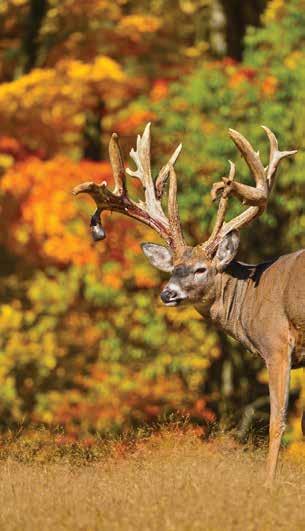
w w w.whitetailinstitute.com 239 Wh i te ta i l Tra i l, Pi n t l a l a , AL 36 0 43 BR EA K ING GROUND F R E E E - N E W S L E T T E R !
A protected food source surrounded by heavy cover near a big-buck bedding area can keep you in the strike zone for extended periods.
RESEARCH EQUALS RESULTS
IMPERIAL WHITETAIL ANNUALS

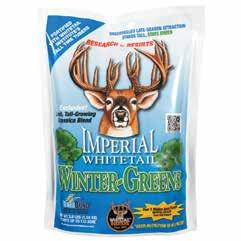

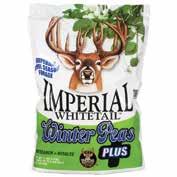


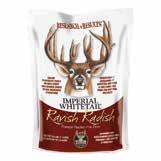
Whitetail Institute annuals produce high-protein tonnage for antler growth, unmatched attraction during the hunting season and sustained production in winter months. Each annual is expertly developed to match your specific needs. Includes seeds only available in Whitetail Institute products.


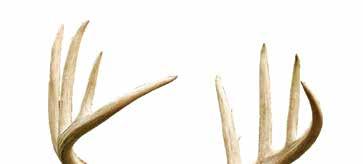

Still the leader since 1988

WHITETAIL INSTITUTE 239 Whitetail Trail, Pintlala, AL 36043 • 800-688-3030 • www.whitetailinstitute.com
ANNUALS TO THE RESCUE
Perennials are a cornerstone of food plot programs, but during certain conditions, annuals can solve tricky management riddles.
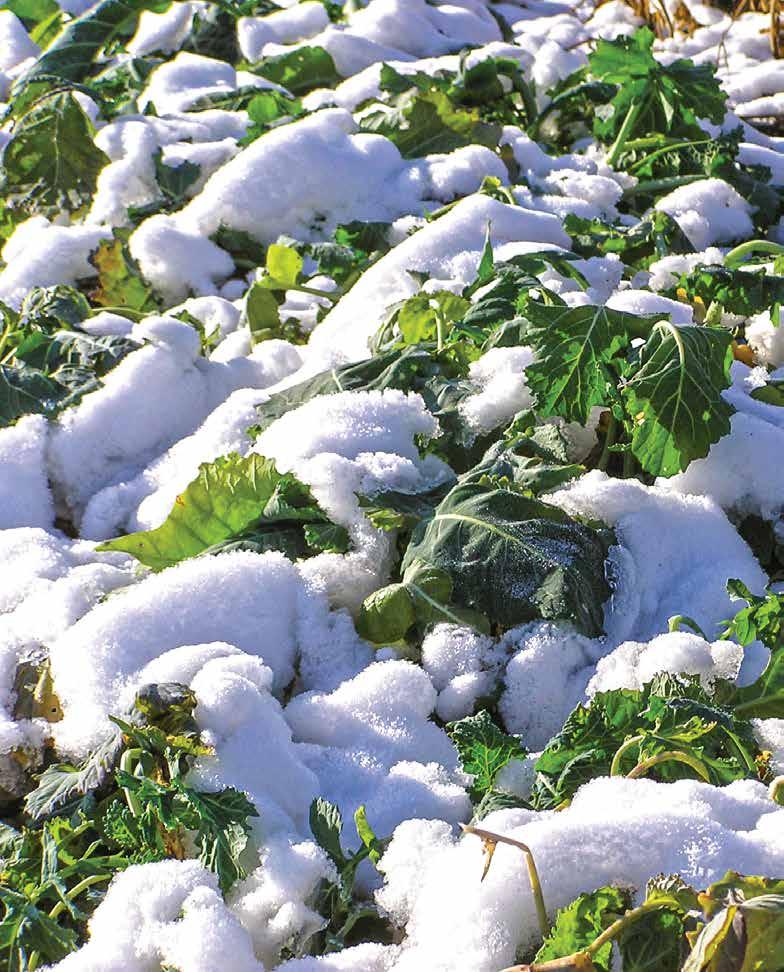 ■ by Matt Harper
■ by Matt Harper
16 Whitetail News | Vol. 33-2
Ihave an outside soul, and I come from a long line of folks who feel best during days spent without a roof.
But some days, it rains, a cold wind blows from the east, and the outside looks like a gray veil. Other days, snow falls sideways, and although you’re standing on the warm side of a window pane, you can still feel the cold of the white landscape. Those days give you permission to relax inside and enjoy the peace that comes with shelter. And you’ll likely find me watching westerns, or as my children would say, “old westerns.” One of my favorite spaghetti westerns is A Fist Full of Dollars, and one of the best lines in the movie occurs when Ramon Rojo, the villain, says to Clint Eastwood, “When a man with a .45 meets and man with a rifle, the man with a pistol will be a dead man.” Of course, that statement proves to be wrong thanks to trickery via a cast-iron plate under Eastwood’s serape and some lightning-fast six-gun work. In most cases, a rifle would beat a pistol, as it’s typically more powerful and can hit a target at longer range. But in close quarters, when speed is essential, the pistol shows its merit.
Perennials
That analogy might leave you scratching your head, but I think a rifle and a perennial food plot have some clear similarities. For an outdoorsman in the backcountry, a rifle is a must for hunting and self-protection. It’s unquestionably better than a handgun for bringing down game and protecting yourself at a distance. In much the same way, I consider a perennial food plot a must in my nutritional management arsenal. Perennials are the backbone of food plot plans, as they provide the most supplemental nutrition to deer and produce a constant, consistent source of nutrients. On my farms, you will find at least one — sometimes several — large (1 to 3 acres) perennial plots of Imperial Whitetail Clover or Alfa-Rack Plus, which act as the anchors for providing quality nutrition and attracting and holding deer. Depending on the severity and duration of the extreme cold of an Iowa winter, those plots can supply sustenance for almost three-fourths of the year.
But perennials also have limitations. For example, they go dormant in the coldest part of winter to protect themselves and grow back the next spring. Most perennials also need good soil and good growing conditions, and must be maintained regularly to keep down invasive weeds and maintain proper soil nutrient levels. Perennials also require a good seedbed, time to establish and solid planting practices to ensure success.
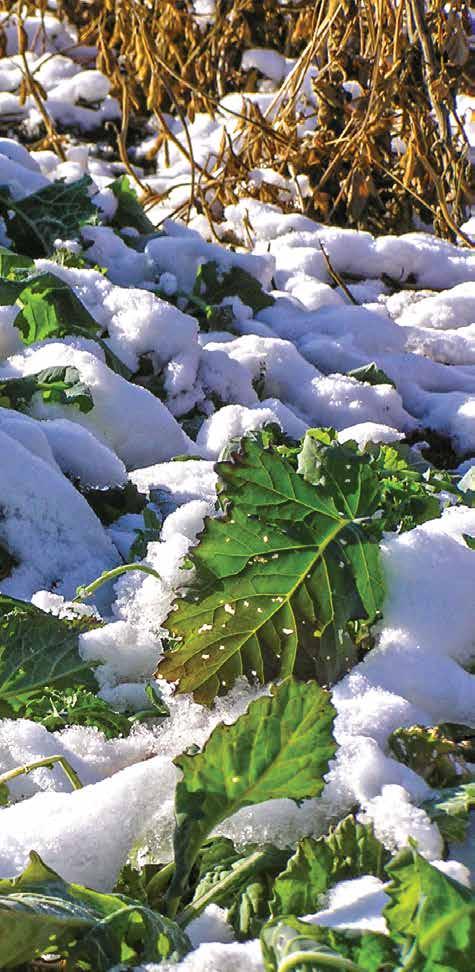
Vol. 33-2 | Whitetail News 17
I’m not painting a bad picture of perennials. However, in some cases, the quickness, ease and agility of an annual food plot can be the answer to a riddle.
Poor Soil
In some situations, food plots find their homes in poorer-quality soils. Perhaps that’s true most of the time, especially in farm country, where higher-quality, more valuable soils are used for agricultural crop production. By poor-quality soil, I mean soils that are at the ends of the spectrum of sand or clay, have a pH that’s significantly out of balance, and have very low nutrient contents and organic matter.
When you carve out a spot in the woods or an overgrown side hill, the soil you’re working is usually not the best. Annuals grow best in good-quality soils, just as perennials do, but the difference is the degree of production decrease as the soil quality diminishes. A properly chosen annual will still produce an adequate plot in poorer soil than most perennials would achieve. For example, I’ve had plots where I have struggled with perennials but found success with an annual. I almost always plant a nurse crop of oats, such as Whitetails Oats Plus, when I seed a perennial. The idea is that the oats come up first and protect the perennials from overgrazing, heat, erosion and weeds to allow time for the perennial to establish. I’ve had plots where I can’t seem to get the soil right for a perennial but have a great stand of oats. I lime and I fertilize, but the soil can’t hold those nutrients as long as needed for perennials. For fast-growing annuals, however, it works fine.
It’s worth pointing out that there’s one perennial — Whitetail Extreme — that can grow in poor-quality soil. But to my knowledge, it’s the only one.
Limited Tillage
Back to our clearing in the trees or the overgrown pasture. Poor-quality soil is not your only nemesis. In many of those areas, getting sufficiently large tillage equipment to the plot to adequately till the soil for a perennial is almost impossible. Even if you own or have access to a no-till drill, you
still might not be able to cross ditches, squeeze between big oaks and scale a steep creek bank with a tractor and drill to access that spot.
Almost all plantings, including annuals, will have better results with proper seedbed preparation, but many annuals can grow well with minimal soil preparation. You still need to ensure seed-to-soil contact, but most annual plots are smaller, and with an ATV and sweat equity, you can do a decent job of clearing the area and exposing the soil. Whitetail Institute No-Plow has been on the market for years and still performs amazingly well. It was designed for the aforementioned scenario. NoPlow is a mixture of hardy, fast-growing annuals comprised of grasses, legumes and brassicas, and it can be used to create hidden, out-of-the-way plots with limited access.
Rough Growing Conditions
People say farmers only talk about the weather, constantly complaining about it being too wet or too dry, and praying for (or cussing) rainy days. If you didn’t come from a farm background but are now a food plotter, a year or two of trying to grow things will put you alongside farmers in a coffee shop complaining about the weather. You can do everything right, creating a perfect seedbed, planting exactly by the instructions and applying the perfect amount of fertilizer, but if it doesn’t rain, all is for nothing. You simply can’t control the weather. Perennials tend to be more sensitive to moisture levels — too much and too little — especially as a seedling, as the plants are trying to establish a root system that will keep them coming back year after year. Annuals, conversely, have one objective: to grow as fast as possible to reach maturity and produce seeds that will ensure the perpetuation of their species. Because of that difference, most annuals are less sensitive to moisture level swings. Even annuals need some rain and will die if flooded for an extended period, but depending on the type of annual, they can be far less affected by moisture shifts.
Timing
Most of us cannot spend every day at our hunting property, tinkering around
and being completely prepared to act quickly when the perfect planting window opens. Although we probably wish that were true, we have full-time jobs we need to pay for our hunting addiction. And it seems like you’re usually working double shifts, traveling constantly or engaged in some other work activity that keeps you busy when you should be putting seeds in the soil. Even if you aren’t working extra hours, it can seem like weekdays are sunny and dry, but every weekend brings torrential downpours, making you check how many vacation days you have left. If you push the envelope in terms of seeding late or after the recommended planting window for a perennial, annuals can be a good backup plan. Let’s say you want to plant a spring plot of perennial clover, but weather or your work schedule keeps you out of the field, and you miss the planting dates. Imperial PowerPlant is a good alternative, as it can be planted a bit later into spring or early summer with good success and still provide the nutrition and attraction you’re seeking.
In general, annuals are a bit more forgiving with planting dates, as they tend to grow faster than perennials (at the seedling stage). Depending on the annual, you need to get a few inches of growth. Imperial Oats Plus, for example, doesn’t not need to be mature to be attractive and nutritious. In fact, it’s better to have it 4 to 6 inches tall, which, depending on rain and heat units, might only take a few weeks after planting.
Timing of Nutrition
Perennials can provide consistent quality nutrition for much of the year, especially if you use a cold-tolerant variety. But, when temperatures drop below freezing and stay there, perennials will go dormant. To provide a food source in winter, annuals such as brassica mixes are great options. In the Midwest, brassicas are planted in late summer, sometime around early August. That allows for adequate temperatures for good growth before first frost, providing large amounts of energy-rich food for deer in winter.
I’ve used Imperial Winter Greens and Tall Tine Tubers for many years with great success, and recently added
18 Whitetail News | Vol. 33-2
radishes to the mix. Deer seem to hit the radishes a bit earlier than the other brassicas, producing somewhat of a succession feeding plan. With the Tall Tine Tubers and Whitetails Ravish Radish, you get the advantage of aboveground vegetation and the tuber/radish, which deer paw out of the ground and eat. These plots also make for great hunting during the late season.
Hunting Plots
When people discuss hunting plots, most folks think of smaller, out-ofthe-way areas surrounded by thick cover, often planted in some kind of annual. That’s an accurate description, but I think it’s important to note that all food plots — provided deer are using them — can be considered hunting plots. One of my best bowhunting plots is an Imperial Clover field in a small clearing about 300 yards from my main feeding food plot. Deer stage in that area and get a few bites of clover before heading to the bigger plot, and they typically do so at least an hour before sunset.
Still, annuals are a very common planting for hunting plots for a couple of reasons. First, in some cases, it’s more difficult to access those plots with larger tillage equipment, so they require a planting that will grow with minimal tillage, such as Imperial NoPlow, Secret Spot or Bow Stand. But that’s not the only reason. We just discussed how annuals can be used for targeted nutritional sources for specific times of year, and the same holds true with attraction for hunting. Plant food sources tend to be more attractive at particular times in their growth cycles. As mentioned, oats are more attractive when young and growing than when mature. That can also be said for wheat and rye. You can plant annuals to try and hit the perfect attraction phase to match your hunting plans. Another example of attraction timing with annuals involves brassicas, which tend to be most attractive during colder periods. When you plan to hunt that plot will influence what you’re planting. Combinations of plant varieties, such as Imperial Winter Peas Plus, can be
planted in hunting plots, and because they contain a mix of forages that are attractive at various times, they can be effective throughout the season.
Conclusion
Deer management is much like a puzzle, as it takes many pieces to bring the picture together. Perennial food plots are pieces of that puzzle, but so are annuals. To maximize your program and have a complete picture requires the use of annuals in the ways I mentioned, but that doesn’t cover all the ways you can use annuals in a management scheme. You have many annuals to choose from, each with unique characteristics that provide some necessary part. It’s like having several tools in a tool box. You can identify a need and pull out the appropriate tool to meet those needs.

SANCTUARY SENSE
Everyone talks about creating sanctuaries, but few folks know how to do so effectively. Follow this common-sense approach to managing safe spots for deer on your property.

 ■ by Scott Bestul
■ by Scott Bestul
20 Whitetail News | Vol. 33-2
We called him “The Flyer Buck” in a nod to our group’s unimaginative system for naming deer. The 5-½-year-old whitetail had sported a flyer point off his G-2 since he was 2-½ that even then turned our heads. But as impressive as he was as a juvenile, we believed he’d be something special if he could endure the gauntlet of local hunting pressure. His survival to maturity was no small miracle for which to pray. Although The Flyer seemed to like the small (100-acre) farm where he’d spent his formative years, local properties were hunted reasonably hard, and of course, there were three public tracts within his home range.
But hoping was the best we could do, and to our group’s credit, those hopes weren’t entirely unrealistic. Several years before The Flyer was a fawn, we’d created a sanctuary on the small property by hinge-cutting trees to create a dense bedding area. Then we’d committed to staying out of that 5 acres of nastiness, only creeping into its confines to retrieve a wounded deer or search for shed antlers in March. Those occasional forays into that safe space for whitetails proved they appreciated our efforts. Deer trails resembled cattle paths, scrapes peppered the landscape, and rubs appeared on any tree worth a buck’s attention. The place screamed for a stand, but we observed our commitment to stay the heck out.
Fortunately, just as several other nice bucks had done, The Flyer buck settled into our sanctuary and called it home. Of course, he wandered elsewhere, feeding in the lush farm fields and our food plots nearby, following buddies in his bachelor group on summer walkabouts, and chasing does during the November rut. But when it came time to settle into a secure bedroom, The Flyer seemed to view our sanctuary as his go-to spot. That helped him survive two more hunting seasons, and as he grew his fourth set of antlers, we recognized The Flyer as one of the better bucks our small property had ever grown.
The ABC’s of Sanctuaries
It’s no secret that whitetails are sensitive to areas that are dangerous. As a prey species, deer have been practicing evasion — avoiding the chase of a wolf, the pounce of a cougar or a hunter’s bullet — for as long as they’ve been a species. If you need


Vol. 33-2 | Whitetail News 21
proof, watch a whitetail feeding in a field or food plot. Rather than burrowing its head into the groceries like a cow, it’s constantly jerking up to scan for danger, and a typical feeding session lasts minutes instead of hours. When a whitetail walks down a trail, it’s eyes, ears and nose are constantly scanning for peril. Deer recognize danger spots and learn them in a hurry.
Conversely, whitetails also learn places where they feel safe and are rarely threatened. You can get some good campfire debates going about whether deer — particularly older bucks — are “smart” because they find hidey holes where they’re rarely bothered and gravitate toward those spots. I don’t think whitetails are capable of deductive reasoning. (“Hey, this is an abandoned farmstead that most people are going to ignore, so I’m gonna bed there a lot.”) Instead, they repeat behaviors and revisit places that have helped keep them alive. And we’ve all witnessed the natural spots where the deer we hunt feel safe: that thick cedar swamp, a brushy creek bottom, a densely wooded hillside, a gnarly fence line or even a swath of CRP grass surrounded by ag fields.
Savvy whitetail managers attempt to create such places on the properties they hunt and manage, essentially giving deer a safe zone — or multiple ones — where they rarely encounter their major predator: human beings. Creating such sanctuaries attracts more deer to a property and allows the side benefits of increased
daylight movement and more hunting opportunities. Not surprisingly, sanctuaries are also some of the toughest concepts to sell to hunters. We want to hunt every square inch of the properties we can access, particularly if they’re relatively small. Still, as the Flyer Buck and several others have taught me, staying out of a portion of a property might be difficult at first. But when the result of that effort means better hunting — more on that later — the reward is more than worth the effort. Here’s how to make it happen.
Getting Started
Sometimes choosing a spot for a sanctuary is pretty darn simple. You just pick a site where deer already feel safe. On the central Wisconsin property where I learned to hunt, we had a chunk of creek-bottom spruce, pine, alder and marsh grass we called “The Big Swamp.” The 40-acre bog was an ideal place for pressured whitetails to escape pressure during the Badger State’s nine-day firearms hunt. Displaying a restraint rare for the time — that was almost 50 years ago — the elders in our group stayed out of the Big Swamp for eight of the nine days of the season. When we made a drive through the tangle on the season’s last day, whitetails poured out of there like bees from a hive. Of course, if we’d been serious about growing big deer, we’d have stayed out of the Big Swamp entirely, but the elders weren’t that forward-thinking.
At any rate, natural dense-cover hide-

outs like that swamp are perfect for a sanctuary. Deer already want to be there, and they require little — if no — extra work to establish or maintain. Other examples include a cattail marsh, areas of recent logging — or a windstorm that leaves downed tree and tops — or a brushy hillside or, better, the convergence of several hillsides that deer use for bedding during various wind and weather conditions.
Of course, if no natural sanctuary exists, you must create one. Generally, I recommend a spot that’s already difficult to hunt because of terrain or prevailing wind directions. We all have spots that seem to scream for a deer stand, but when we hunt the area, we see few deer or spook the ones we spot. For many years, I hunted a farm in the famous Buffalo County, Wisconsin, the nation’s top producer of B&C bucks. I was a fairly inexperienced bowhunter then, and although I managed to tag a couple of mature bucks there, I screwed up on many more. One spot that I was super excited about was the confluence of three brushy coulees that were blown up by massive rubs and huge scrapes. I hung a stand there but never saw a mature buck from it. And I finally realized the funky thermals and conflicting winds made the spot nearly impossible to hunt effectively. That’s exactly the kind of spot that needs to be marked as hands-off and relegated strictly to growing — not killing — big whitetails. Sadly, I was not smart enough to recognize that then.
Sometimes, a property doesn’t sport the natural cover or terrain features that lend themselves to being safe spots for deer, and in that case, they must be created. The sanctuary discussed at the beginning of this story, which exists almost behind my house, is a perfect example. When my neighbor and I started looking hard at the cover on the property, we realized that a couple of spots offered almost nothing to deer. Those areas grew trees, but they were low-value species that would never be marketable timber, nor were they producing mast or cover for whitetails. So we fired up our chainsaws and went to work, hinge-cutting species such as elm and box elder, and clear-cutting small pockets of birch and aspen. When we were finished, we had three
22 Whitetail News | Vol. 33-2
pockets — none bigger than 5 acres — of an absolute deer paradise. In addition to creating a bunch of horizontal cover that could hide deer, we’d also opened up the canopy to admit a bunch of sunlight. The latter resulted in a flush of young growth — saplings and berry brush — that deer used for browse and security. We designated each of those as sanctuaries and vowed to stay out of them.
Keeping it Alive
One of the hardest things to do when establishing a sanctuary is maintaining the vow to not hunt the place. I’ve created several such spots through the years, and almost invariably, a familiar pattern emerges: Deer find the spot and use it regularly, sign in and around the hidey hole explodes, and the temptation to dive in and hunt the place will soar. Resist it the best you can. It might be OK to slip in an occasional rut hunt — when deer are more mobile and less likely to return to favored bedding areas consistently — but maintaining the hands-off policy is always the best bet.
Because nature is dynamic and ev-
er-changing, don’t count on your sanctuary to stay the same. Trees mature and shade out brush and saplings that are attractive to deer, and you might need to revisit your hinge- and clear-cut areas every few years to drop more trees and keep the cover young, dense and vital. I also like to expand sanctuary areas every few years by taking down trees along the edge and gradually growing the spot where it’s appropriate. In my experience, the best time to do that is late winter and early spring. That’s long after the hunting season and less intrusive to deer, and it optimizes the chance for young trees, brush and forage species to take full advantage of the growing season.
Obviously, one of the main reasons for creating a sanctuary is increased hunting opportunity. I’m all for that, of course, but like any stand or blind setup, you’ll want to do so carefully. When I hang a stand or erect a blind near a sanctuary, I immediately determine the best winds for hunting the spot, as well as the absolute no-no conditions when it should never be visited. I’m also uber-aware of my approach to and exit from those am-
bush sites. If deer bedded in the sanctuary can see, hear or smell me as I walk to and from stands, hunting the spot is simply not worth the risk. Using products such as Whitetail Institute’s Conceal provide an excellent way to create bulletproof entry and exit routes to any stand — especially those near a sanctuary.

Conclusion
All that sounds like an awful lot of work, but the rewards have certainly been worth it. The Flyer Buck was only one mature whitetail that adopted our sanctuaries and used them consistently. In fact, those safe spots were so attractive to the Flyer that they shrunk his territory, creating a homebody buck that rarely ventured off the property. And when my neighbor’s then-15-year-old son killed the Flyer during a November gun hunt, the smile on that boy’s face was all the reward we needed for the time and effort to create the safe spots the buck called home.
HUNT BIGGER MAKING SMALL FARMS
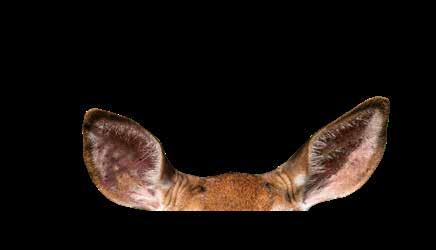


24 Whitetail News | Vol. 33-2
by Josh Honeycutt
Some small farms hunt bigger than they are. For example, a 50-acre tract might feel like a 75-acre piece, depending on the circumstances. Or a property might hunt smaller than it is, such as a 50-acre property feeling more like 30 acres. But if a land manager has the right property canvas to work with and sets it up correctly, small farms can hunt significantly bigger.
I’ve played a role in many small properties that yielded big, mature bucks, including a 10-acre tract (all huntable) that produced a big nontypical, a 50-acre tract with 25 huntable acres that cranked out four great bucks in four years, and an 80-acre farm with 40 huntable acres that produced five bucks in four seasons, I’ve helped manage small farms that outperformed their fighting weight. My biggest deer came off that 50-acre property, only half of which is huntable ground. And on that 25 huntable acres, I’ve shot six bucks, all of which were within a 150-yard radius. That shows you don’t need massive acreages to find success. You can make small farms hunt bigger. Here are several ways to accomplish that.
1. Good Proximity to Neighboring Tracts
The average whitetail home range is about 650 acres, or just more than 1 square mile. The average core area is about 50 acres. Obviously, although you can enhance a property to encourage more usage, there’s no way to hold a deer in one small area all the time. That makes neighboring lands very influential. Having a piece of land that borders unhunted ground is a good situation, especially if your place is set up to produce minimal realized hunting pressure.
2. Like-Minded Neighbors
If people hunt neighboring tracts, it’s crucial to have like-minded neighbors. If they’re willing to shoot a bunch of 1½-, 2½- and 3½-year-old bucks, seeing mature deer is unlikely. You and your neighbors should share similar management and harvest goals.
3. Minimal Hunting Pressure
Smaller tracts are easier to overhunt and burn out. Applying minimal hunting pressure is necessary for folks hoping to preserve a property’s longevity. Quality doesn’t last long when deer are constantly running for their lives.
4. Higher Deer Densities
Higher deer densities aren’t always good. Never allow populations to reach or surpass the area’s carrying capacity. That will result in poor herd health and habitat destruction. In unique situations when numbers increase in a healthy manner, higher deer densities can withstand more harvest, effectively making the land seem larger than it is.
5. Ideal Property Layouts
Most properties are various shapes and sizes. Some are blocky, like a square. Others are long and slender, like a rectangle. In general, some properties hunt bigger than they are because they have an ideal layout. This might mean more of the border connects to other great habitat on neighboring tracts. It could be a long, slender property that spans a greater distance and crosses into multiple big-buck core areas. Regardless, it hunts bigger.

6. Establish Mini Hubs
Landowners with enough habitat on a small property can make that tract hunt bigger by creating mini hubs, or pockets, of activity. Create bedding areas, food sources and water sources next to each other at various areas of the property.
7. Segregate Bucks
Mature bucks don’t defend territories, at least not like wolves and other animals. But they defend their hierarchy in the herd. And if a buck thinks it doesn’t have the status to succeed during the rut, it might move elsewhere, especially if it has frequent confrontations with a tougher deer. To minimize that, create several bedding areas to help separate bucks when testosterone levels rise.
8. Create Seasonal Bedding
Deer need various elements from bedding areas. Those needs change throughout the year. In summer, they need to remain cool. In fall, they need security from hunters and predators. During the rut, they need to be closer to does. In winter, they need the security from the elements offered by solar (south-facing slopes) and thermal (conifer stands) bedding. Creating those elements increases the amount of time they spend on your property.

Vol. 33-2 | Whitetail News 25
Don’t have unlimited ground? Try these 25 tips to hold more deer and have better hunting on small properties.
9. Provide Great Grub
Small properties have less acreage, which limits volume. But by taking soil samples (https://whitetailinstitute.com/ soil-tests/), improving the ground, planting species that get greater yields and maintaining food plots (https://whitetailinstitute.com/herbicides/), you can increase the available food tonnage. Further, maximize food production by improving the soil nutrients and plant health. This will also lead to a greater yield, which is necessary for increasing forage tonnage with minimal acreage. A good product to consider for this is Impact (https://whitetailinstitute.com/impact-soil-amendment/). Further, a mixture of spring- (https:// whitetailinstitute.com/spring-seeds/) and fall-based (https://whitetailinstitute.com/ fall-seeds/) food sources is ideal.
10. Offer Unique Food Sources

Although smaller properties can’t compete with larger tracts for volume, they can level the field with quality and uniqueness. Offer unique food sources deer can’t find elsewhere. Soft mast, such as fruit trees, are great options. Apples, pears, plums and persimmons are solid bets. Hard mast, such as chestnuts, red oaks and white oaks are, too. Plant whatever grows well in that growing zone, and make sure it’s stuff deer can’t find elsewhere. Chestnut Hill Outdoors has a great selection.
11. Install Water Sources
Deer need water, too. Placing small watering holes that hold water year-round can boost the time deer spend at your place. Locating those between bedding areas and associated food sources (but closer to the beds) is also a good idea.
12. Offer the Extras
Giving deer extra incentives is always a good idea. They might not always make the difference in whether a whitetail takes up residence, but they can help influence travel patterns. For example, where legal, minerals supplements (https://whitetailinstitute.com/minerals-supplements/) are great additions. Done responsibly, supplemental feeding can be, too. Adding mock scrapes, scrape trees, rubbing posts and other focal points are also solid bets.
13. Every-Acre Optimization
Every inch of dirt needs to serve a purpose. Small properties don’t have the luxury of wasted space. When planning a property, make sure each acre is destined to provide bedding, food, water, travel routes, screening, sanctuary, entry routes or exit routes. Don’t leave dead space.
14. More Stand Locations
It might sound counterintuitive to have a lot of stand and blind locations on a small property, but it’s necessary.
Amplifying the number of spots helps fine-tune your perch for subtle changes in the wind. You need to be confident in your spots, as small-farm hunters can’t afford to spook deer like big-tract hunters can. Fifty, 25 or even 10 yards can be the difference in a deer smelling you.
15. Air-Tight Box Blinds
Sometimes, the best spots aren’t great for the wind. Whether it’s swirling winds or a consistent prevailing wind that just doesn’t work, some spots look so good you must hunt them anyway. Of course, that isn’t possible with a tree stand or soft-sided blind. Deer will smell you. But sometimes, you might make it happen by using an air-tight box blind, keeping the windows shut and opening them when it’s time for the shot.
16. Quality Access
Property access can make or break a farm. Depending on where deer bed and feed, and how the land lays out, deer can easily see hunters come and go. Access direction — north, south, east or west — greatly influences the pressure applied to a property.
17. Good Entry and Exit Routes
In addition to quality directional access, good entry and exit routes are necessary. This is true from the truck to the stand or blind. If deer see, smell or hear you at any point, it negatively affects the property. Having designated paths that get hunters from A to B and back again without alerting deer is crucial. When hunters do this, they can hunt the property far more often while avoiding burnout, especially on smaller tracts.
18. Adequate Screening Cover
Screening cover plays a big role in ensuring deer don’t see you along entry routes. Planting a tall-growing screen is a great way to shield your approach and departure. Planting screening along roadways, property lines and other areas where people can see into the property is a good practice, too. Plus, using screens as borders around food plots feathers the edges and makes deer more comfortable entering the open during daylight. Whitetail Institute’s Conceal (https:// whitetailinstitute.com/conceal/) is a great option. Imperial PowerPlant (https://
26 Whitetail News | Vol. 33-2
WITH AMPLE PLANNING AND EFFECTIVE MANAGEMENT, YOU CAN MAKE SMALL FARMS HUNT MUCH BIGGER.”
whitetailinstitute.com/imperial-powerplant-annual/) is tall-growing, too, and also attracts deer as a food source.
19. Off-Limits Bedding Areas

Although I like to hunt the edges of bedding areas, that can be riskier on smaller tracts. There is less room for error, as deer can be easily pressured onto neighboring lands. You can still be intelligently and strategically aggressive on smaller farms, but it needs to be a high-odds situation. Most of the time, that means bedding areas are off limits.
20. Low-Impact Tactics
There are many plays in a hunter’s playbook. Each can be classified as low-impact (low risk but lower odds) or high impact (higher risk but higher odds). Often, smaller properties require lower-impact tactics, such as hunting the fringes and calling less. Times to toss that strategy include the rut, the final days of the season, and if you believe a buck is about to be killed by a neighbor or likely to transition elsewhere because of an anticipated shift.
21. Cull Some Bucks
We don’t cull bucks to improve genetics. The science says that isn’t possible in wild herds. But you can remove inferior-antlered deer to make room for bucks with bigger and more desirable antler characteristics. That’s the reason behind culling bucks.
22. Shoot More Does
Matriarchal does sometimes push bucks around — even off a property. Shooting an appropriate number of does mitigates that and makes bucks work harder to find receptive does during the rut. That leads to target deer being more visible, as they spend less time locked down and more time on their feet.
23. Strict Go and No-Go Rules
Certain situations might dictate that hunters should or shouldn’t go afield. Following surefire reasons to hunt on a specific day, as well as specific reasons not to hunt, are important in preserving the quality of a small tract’s hunting value.
24. Give It Needed Breaks
Smaller lands often require longer recovery periods between hunts, especially if they’re not set up with bulletproof access, entry routes and exit strategies. Let things go back to normal between sits, or it will regress — sometimes quickly.
25. Hunt Peak Times
Unless they’re set up to hold deer all season, it’s likely that smaller farms will peak at certain times. That might be the early or late season, or the pre-rut and rut. Recognize when a property is at its best, and hunt it during those phases.
Conclusion
Overall, hunters don’t need massive properties to find consistent success. With ample planning and effective land management, you can make small farms hunt much bigger.
By Ranew’s Outdoor Equipment®
MADE IN AMERICA. BUILT TO LAST. 678.544.4400 WYANCY@RANEWS.COM THEFIRMINATOR.COM
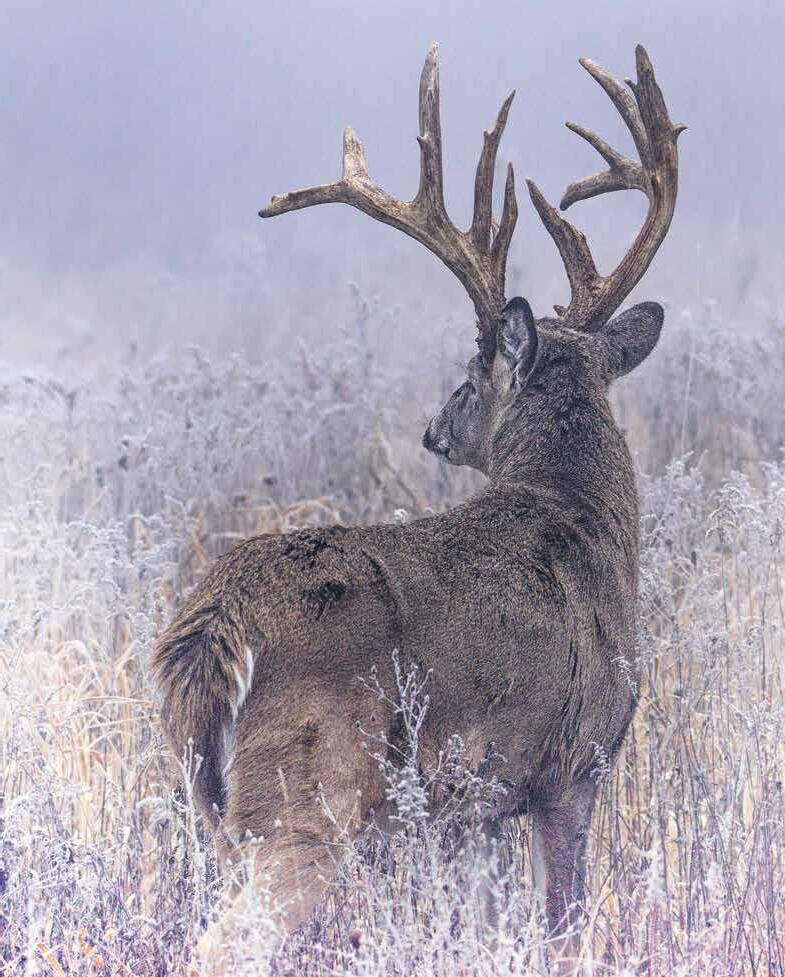

28 Whitetail News | Vol. 33-2
■ by Gordy Krahn
Pride of ownership. It’s a driving force for hunters who own or lease land and then become stewards of that property — nurturing it, improving it and making it a haven for whitetails and other wildlife. The goal, of course, is improved deer health and antler quality, and enhanced hunting opportunities as the result of their hard work coming to fruition.
We all kick ourselves for not pulling the trigger on that prime piece of hunting land that came up for sale 20 years ago, right? And those old-timers who lament, “They aren’t making any more of it,” are spot on. Just like the best time to plant a tree is 20 years ago, opportunities to buy property you can afford are often fleeting. The timing has to be just right.
For Tom Eller, a landscaper who lives near Montgomery, Alabama, that opportunity came in the form of a prime piece of real estate in Georgia, just two hours from his home — a 120-acre parcel he and his wife acquired in 2018.
“It was my wife’s great uncle who owned it,” Eller said. “It’s surrounded by agricultural land — rotating crops of peanuts and corn, mostly — with a big power line running through the center of it. About 20 acres of it was a pecan orchard, centrally located on the property. He died in the early ’90s, and the forest reclaimed the pecans. Then, Hurricane Michael came though in 2018 and laid a lot of trees down. It was a mess. You really can’t walk [the timber] or hunt it much because there are so many deadfalls, but
it produced some good bedding areas for the deer.”
Laying down his hard-earned Benjamins for the land was “a little scary,” Eller said. “We were just blessed at the time to be in a position to make it happen. About 10 years ago, I would have probably told you I couldn’t do it, but it’s paid off for my wife and me. My two older sons help me manage the place. Thank goodness, because it’s a lot of hard work.”
It’s no surprise that Eller’s love of hunting whitetails is interweaved in family tradition.
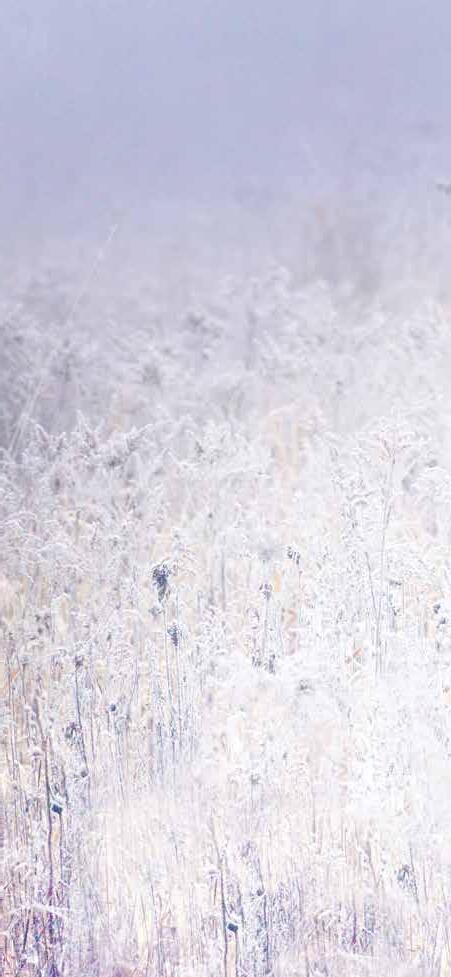
“I’m 54, and like most kids when I was growing up in Alabama, we started out in a deer hunting club with family members,” he said. “My brothers were taking me out hunting at a pretty young age — probably 8 or 9 years old. And that was pretty much all hunting deer with dogs. But we kind of evolved in the late ’80s and started getting off the ground, realizing there was another side to this deal.”
Feed Them and They Will Come — And Stay
Obtaining land is only the first step — albeit a giant one — in developing a deer management program. When the dust settles on the closing papers, it’s time for the new property owner to roll up his sleeves and get to work. The science behind food plots and supplemental feeding requires some forethought to reach goals — to provide deer with the nutrients they require to build healthy bodies. For does, that means raising healthy fawns, and for bucks, it’s maximizing antler growth.
Vol. 33-2 | Whitetail News 29
There’s a special sense of accomplishment that comes from dropping the hammer on a buck you’ve worked hard for — especially if you do it on your own land.
Whether it’s food plots, a supplemental feeding program or strategically placed mineral licks, the key is to use every available tool to attract and hold deer on the property to provide the best odds for bagging a big buck come fall.
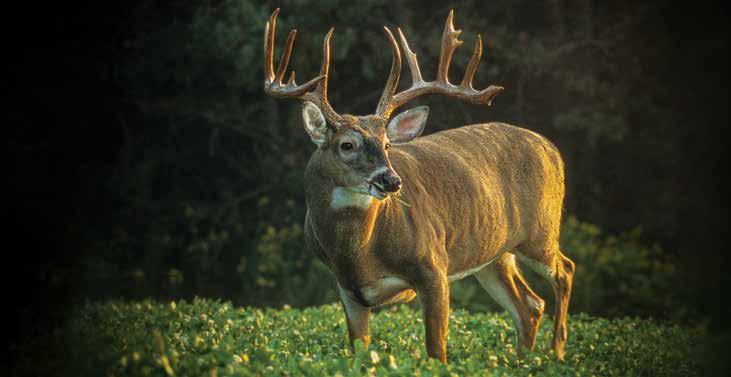
“We changed it up a little this year,” Eller said. “The first thing I did was plant some Imperial Whitetail Conceal early in the summer in an area where the power line crosses a major dirt road to give the deer a little cover from passing traffic.
“Last year, we used Pure Attraction, Whitetail Oats Plus, Tall Tine Tubers and Imperial Winter-Greens. The oats, especially, really blew up, and the deer just loved them. This year (2022), we rotated some of that out and added Imperial No-Plow and Imperial Whitetail Clover.”

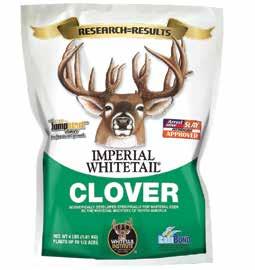

Eller said that when they get rain at the property, the race is on to get seed in the ground.
“One issue you have down in that part of the country is that it’s really sandy,” he said, “and timing is everything when it comes to rain. During
the end of September and early October, I think everybody in Alabama and Georgia has their tractors loaded up ready to go. My fields are looking really good now because we’ve finally been getting some rain — after going 60 days or so with hardly a drop. The Georgia bow season starts in September, and it’s still pretty dang hot down here then, so I usually try to wait till the first of October before I do anything and watch the forecast for rain.”
Another challenge, Eller said, is that there’s a hunting club bordering one side of his property, which means he needs to do the best he can to ensure deer don’t want to leave his land, via the implementation of food plots, security cover and safe zones. But during the rut, he knows there’s nothing he can do to keep them from wandering.
“I’ve been lucky so far and have been able to hold them for most of the year on my place, but it happens,” he said. “The rut changes everything. It happens to me. It happens Lee and Tiffany, the Drurys — all of ’em.”
Setting Up for Success
In addition to attracting and holding deer, food plots are instrumental in providing close encounters via wellplaced tree stands, ground blinds and shooting houses.
“It’s kind of hard to picture, but I have a large food plot that’s part of the old pecan orchard, where the power line kind of skirts the edge of it and then continues on for another 300 or 400 yards,” Eller said. “I’ve got an enclosed stand centrally located to where I can pretty much cover the entire plot. And one good thing about these stands nowadays, if you’ve got the windows shut, you’re basically scent free. We have a ground blind in our other field — I call it the road stand. It’s about an acre plot, and I’ve got one other plot on the backside of the property, where we have a double ladder stand and a couple of other ladder stands. That’s about it. On this property, you really can’t hunt more than two or three guys at a time without busting deer off the place.”
It was the enclosed stand where Eller
RESEARCH = RESULTS
IMPERIAL WHITETAIL CLOVER WHITETAIL INSTITUTE www.whitetailinstitute.com 239 Whitetail Trail, Pintlala, AL 36043 • 800-688-3030 Still the leader since 1988
Imperial Whitetail Clover provides attraction and up to 35% protein levels. These proprietary clovers were developed by Whitetail Institute agronomists.
decided to lay an ambush during the rut in November this past year. “Inter estingly enough, that part of Georgia has a rut that falls a week or so prior to Thanksgiving — unlike here in Al abama, where it’s typically mid-Jan uary,” he said. “We’d been using Moultrie cellular scouting cameras to monitor the deer because we’re about two hours away.”
Eller’s hunting buddy and neigh bor Wade Atchley joined him for what was their annual hunt together.
“There were two or three good bucks on the farm last year that we would have taken,” Eller said. “One had been on our place for about three years and had grown into a 150-incher, which is a pretty good buck for that part of the country. The neighbors killed him, of course — with one day left to go in the season. They never even had a picture of the deer, and we had three years of him. He was a great buck. Seems to be the deal — some of ’em got it, some of ’em don’t. He definitely had it.”
Big Buck Down
“It was a cold, frosty morning, and the deer were on the move,” Eller said. “I don’t know if the pressure was high or low or what it was, but it just felt right. I’d actually tried to encourage Wade to go to the enclosed stand. He’d sat there the afternoon before and saw a good buck, but I ended up going to the stand that morning.”
“Deer were moving really well that morning,” Eller said. “I had some does on the oats in the bigger part of the field at first light, and [a short time later] I saw a couple of does come out at a trot from an area where the driveway [into the property] kind of parallels the plot. I had a window cracked, just enough so it wasn’t fogging up in the blind, and I actually heard a grunt from behind me.”
Eller slowly shifted to get a look, and there he was: “A nice buck bird doggin’ the does up through the orchard.” The buck stopped broadside in the middle of the plot, focused on the does, probably 50 yards from the blind. Eller shouldered his old Remington Model
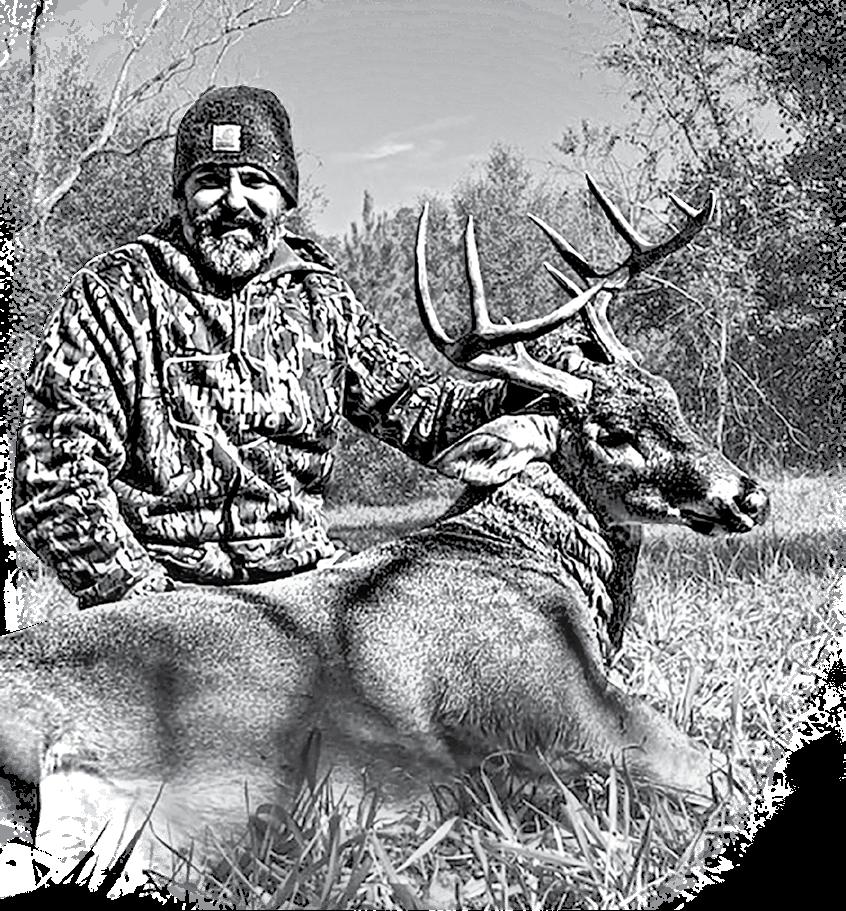
700 and tugged the trigger.
Eller said he had no previous encounters with that buck, but it met the criteria for the property.
“We had a lot of footage of him in velvet, and I’m pretty sure we had him the year before, too,” Eller said. “He’s probably a 120-inch deer or so, but we’re shooting age, and either they have it horn-wise or they don’t. He’s pretty decent and probably weighs in at 210 or so, which is pretty good-sized for down here. He was alone, and he was an old deer, and that’s what we’re trying to do — manage the farm to shoot the older guys.
Worth the Effort
For Eller, all the effort is worth the reward.
“Yeah, man, it’s awesome, killing a good buck on my own land,” he said. “You know, it’s a little over two hours from the house [to the property], so we’re working there all summer long in the heat and the gnats bush hogging and keeping it mowed down, moving fallen trees and clearing stuff out of the way, and [all that effort] just makes it that much sweeter. When we started working the property, it was evident by the sign that it was loaded with deer and we’d just have to be selective if we wanted to improve the quality of the bucks there. It’s still a work in progress.”
Vol. 33-2 | Whitetail News 31
YEAH, MAN, IT’S AWESOME, KILLING A GOOD BUCK ON MY OWN LAND.”
CELEBRITY
CHIPPER JONES
Here’s the skinny on the Major League Baseball Hall of Fame star’s deer hunting lifestyle.
 ■ by Darron McDougal
■ by Darron McDougal
Darron McDougal: Tell me about your first whitetail. How old were you?
■ Baseball hall-of-famer Chipper Jones has a passion for big whitetails.

32 Whitetail News | Vol. 33-2
Chipper Jones: “I was probably 9 or 10 years old. At the time, my dad and I belonged to a 7,000-acre dog-hunting club in central Florida. We had about 15 Walker hounds at one point or another. We tore up some Chevys and Fords chasing after little bucks back in those days. Anyway, my dad had a spike pegged down on an evening feeding pattern. We set up along the edge of a spruce pond and waited for him to come out. When he did, I shot him with my .22 Mag. from about 85 to 90 yards. It might seem insignificant to some folks, but it’ll always be special to me.” PROFILE:
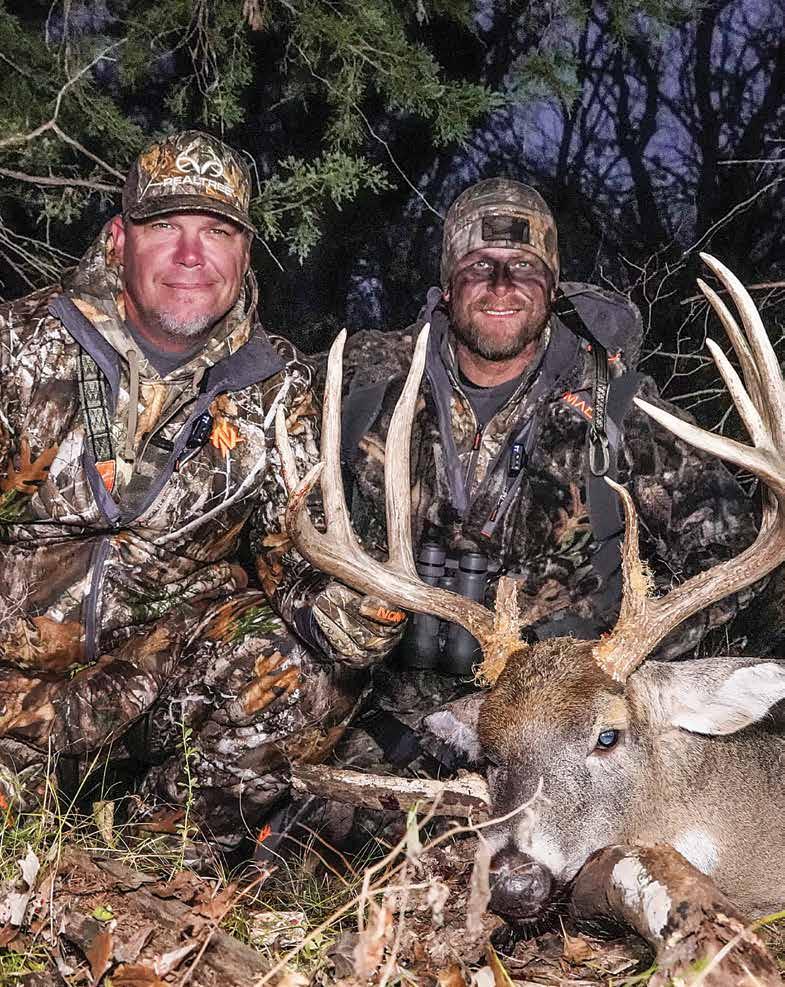

Vol. 33-2 | Whitetail News 33
■ Food plots are a central component to Chipper Jones’ management strategy and deer hunting pursuits.
SPEND MORE TIME ON WHAT’S IMPORTANT

FOR MORE THAN 20 YEARS, hunters have had to accept that almost half of their trail cam photos are useless blanks caused by wind, harsh light, or non-target critters like raccoons and squirrels. We call these unwanted images False Triggers and they are a waste of your time, money and battery life.







The new Edge Pro by Moultrie Mobile introduces the industry’s only False Trigger Elimination (FTE) technology. FTE eliminates up to 99% of false triggers with up to 96% species accuracy. This means if deer photos are what you want, deer photos are what you get.






EDGE
OTHER
EDGE
WITH
ELIMINATES
TO
OF
To learn more about Edge Pro and our industry first FTE technology visit: MOULTRIEMOBILE.CO M / TRIGGERED
PRO
CAMS
PRO
FTE
UP
99%
FALSE TRIGGERS RESEARCH SHOWS THAT UP TO 46% OF CELL CAM PICS ARE FALSE TRIGGERS
DM: Did you find much time to hunt during your baseball career?
CJ: “The regular baseball season usually finished sometime in October, so baseball and hunting season created a win-win situation for me. Winning games during the post-season meant we could chase the World Series. If we lost and our season ended, then I could go chase deer.
Hunting was always a good release because baseball starts in February and goes clear into October. That’s a long time to be playing baseball and grinding away. Regardless if we won or lost, one of the best things to do after baseball season was to charge my batteries. The best way to do that was to climb 25 feet up a tree and wait for a big whitetail to walk by.”
DM: How did Major League Bowhunter come to be?
CJ: “My partner, Matt Duff, and I were part of Buck Commander for a while. It was a blast. We had so much fun with some great folks. After about five years, Duff and I felt a strong pull

to create a show based on the concept of learning and teaching. In other words, we don’t know it all. We kill big
SOIL TEST KIT
Whitetail Institute Soil Test Kits provide the data you need for great food plots. Professional laboratory soil testing is one of the most important things you can do to ensure food plot success. The Whitetail Institute offers professional results and recommendations for all Imperial Whitetail products, as well as other crops. Accurate fertilizer and lime recommendations are provided.


bucks, yes, but we also make mistakes. We miss shots. We blow deer out of an area occasionally. We want our success-
Don’t want to wait for your kit?
Don’t want to wait for your kit?
Download Your Soil Test TODAY!
Instant online access can be found at: https://bit.ly/35KoS7f
Please send Soil Test Kits at $13.95 each. FREE Shipping and handling
Please send Soil Test Probe at $129.00 each. FREE Shipping and handling

Add 7% Sales Tax. Cost of kit includes test results and phone consultation.
(Results are available 24-48 hours after the laboratory receives the sample.)
SHIP TO:
Name:
Address: City: State: ZIP:
Phone: Email:
Payment: ❑ Check or Money Charge to: ❑ Visa ❑ Mastercard ❑ Discover ❑ AMEX
(No PO Boxes) Order enclosed
Credit Card: Exp. Date: Sec.Code:
Signature:

AL 36043 CALL TOLL FREE: 800-688-3030 • www.whitetailinstitute.com
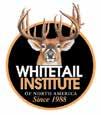
Whitetail Institute MAIL TO: 239 Whitetail Trail, Pintlala,
■ Matt Duff, left, and Chipper Jones just finished producing their 13th season of Major League Bowhunter.
es and failures to become learning opportunities for us and our viewers.
“Our motto is, ‘Never stop learning.’ Whether we succeed or fail, we want to learn, and we want our viewers to learn right alongside us. We apply what we got right or wrong to the very next hunt. We just finished up with Season 13, and our viewers still like what we’re doing.”

DM: What is your favorite state and species to hunt, and why?
CJ: “I’m a whitetail guy. I love trying to get in the back pockets of some huge bucks in the Midwest. It’s not easy to do. They get to be 5, 6 or 7 years old for a reason. Adding a cameraman to the mix doubles the scent and movement. All of those aspects present me with a challenge, and I love a challenge.
“The good Lord blesses us to follow the rut. Once it starts, we’re in Oklahoma, Kansas and Nebraska. We’ll hit Iowa and Missouri. Oftentimes, we’ll end the season in Kentucky and Mississippi. Getting to hunt the rut basically from Halloween through December
“If I had to settle on one location, though, I personally love Iowa the most. There’s no telling what might come out of a cedar or plum thicket. It could be a mature 150-inch 8-pointer, or it could be a 200-inch nontypical. For me, it’s all about the thrill of the unknown.”
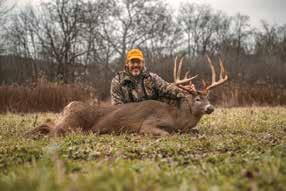
DM: You obviously have a lot of great memories from the whitetail woods, but what is the most special to you?
CJ: “I’ve been fortunate enough to kill numerous big deer in my life. But the most special times are when my wife and kids get out there. My wife, Taylor, has been part of the TV show for several years. I see the sparkle in her eye. Killing a 140- or 150-inch buck might be business as usual for me because I hunt so often, but for her, it’s a very special occasion. Seeing her excitement is awesome. My kids are also just eaten up with bowhunting. They love it. It’s really rewarding to be a part of passing hunting on to my family.”
CJ: “There’s nothing like the time of the year when bucks are coming to the antlers. I love rattling in whitetails because there are different situations in which it can work. Blind rattling and crashing the antlers together is exciting because you don’t know what might wander in. There are also instances when a buck is out of range and can be coaxed in with rattling. In that moment, it takes a lot of experience to be able to read the animal and put your thumb on the pulse of how he’s feeling so that you can pitch the right intensity of rattling his way.”
DM: Why do you use Whitetail Institute products?





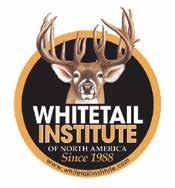
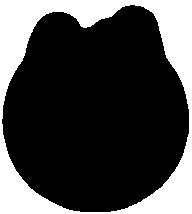



CJ: “Feed and seed are central components to most of our whitetail hunting. We have to use products that we feel will cause a buck to overlook his instincts and walk into a food plot or visit a feeding area. Whitetail Institute’s products haven’t failed us.”
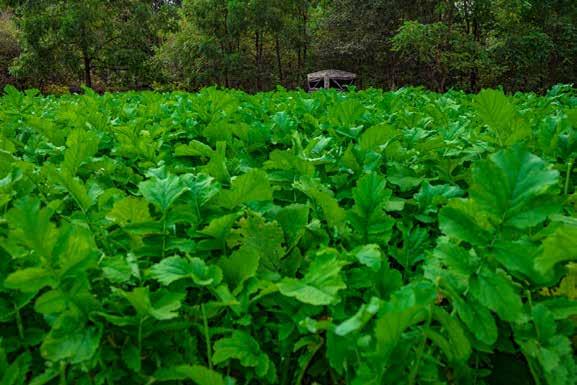
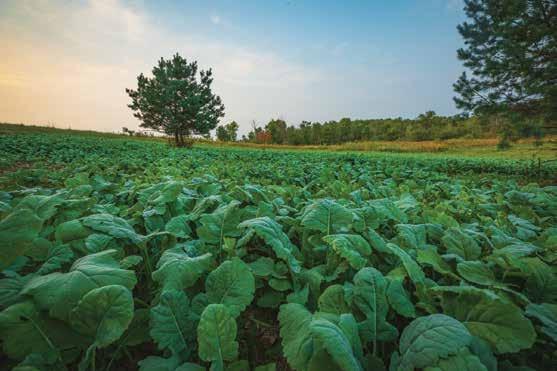


1-800-688-3030 WhitetailInstitute.com FOOD PLOT CONSULTING Let Whitetail Institute’s Next Level Food Plot Consulting’s team of wildlife biologists, agronomist and weed specialists help you improve your property and hold more deer and shoot bigger bucks! Expert advice tailored to your unique property’s needs. On Site Visit & Property Tour Comprehensive Management Plan PlotPerfection Subscription Planting Schedule & Instructions Hunting Strategy Recommendations Soil Testing CONSULTATIONS INCLUDE: WANT TO TAKE YOUR PROPERTY TO THE NEXT LEVEL?
FRESH EYES:
NEW LOOKS AT OLD PROPERTIES
Here are five ways hunters and landowners can completely relearn their hunting land.
 ■ by Josh Honeycutt
■ by Josh Honeycutt
38 Whitetail News | Vol. 33-2
■ Collect as much information as possible about your land, but don’t be too proud to ask others for help. Combined, that knowledge might shed new light on familiar
Hunting a property for many years provides several benefits. Unfortunately, through time, we often become entrenched in patterns. Rather than continually adjusting and changing things when needed, we do things the way they’ve always been done. Sometimes, that’s the right call. But often, it’s wrong, and we do it anyway.
Further, after years of following potentially incorrect practices, deer become familiar with how hunters traverse and use the property, and in turn, they pattern us. Even when we do things as best as the property or situation allows, it has negative effects. All the while, we wonder why deer aren’t doing what they did previously.
Hunters also tend to hunt more based on history rather than the most recent intel. We gravitate to spots deer have fallen in the past instead of hunting areas deer are currently frequenting. That stagnancy and, in a way, arrogance and overly confident laziness, keeps us from filling tags on big deer we might otherwise put in the back of the truck. It prevents us from making the subtle tweaks necessary to target and harvest mature deer.
Although some aspects of deer travel patterns remain the same, many change. And even when they don’t, we should still look at properties as if we never have before. Sometimes, fresh eyes and new looks at old properties are vital.

Option 1: Your Own Fresh Eyes
Start by looking at the property with your eyes. Observe it with new perspective. Things change. Logging happens. Trees fall. Crops rotate. Water sources dry up. The list goes on. And even when it seems things haven’t changed, rest assured, they have in some way.
So look at the property as if you’ve never hunted it before. Start with large-printed maps. This magnified viewpoint helps identify smaller nuances otherwise missed on smaller layouts. Further, rather than looking at it from the correctly oriented north-south axis you always have, turn it 180 degrees to a south-north perspective, or 90 degrees to an east-west perspective. Doing so is ill-advised from a windage perspective, and when dropping stand locations and charting access routes. But it can help you by seeing land in a new way and maybe identifying things you haven’t before.
In addition to maps, use hunting apps. Choose the app that best fits your style and needs. Each is slightly different. If you’re seeking new things, remove pins and notes. Or create a new layer to avoid losing your collected information. Study it with fresh eyes and without all the things you know about the place.
Vol. 33-2 | Whitetail News 39
dirt.
Further, study it with new layers. Try some you haven’t used before. Those can offer different looks, such as foliage versus no foliage. Also, zoom in and out, and observe the land at various elevations. That can also help you find critical elements, even down to a fallen log a buck might bed against.
While scouting in the field, and with your hunting app’s trace path feature turned on, walk every trail on your property. If you must get off a trail, pause the feature, and resume it when you’re back on a trail. When you’ve walked all the trails, pause the feature, and every trail will light up on the aerial map. This shows you how deer are using the property, and more than likely, you’ll see those trails shifting farther from existing stand locations than they once were. That’s how you know your presence and predictability have affected how deer use the area.
While afield, it’s important to determine where deer are crossing back and forth on your property lines and what land improvements or property adjustments should be made. Walk boundaries
to determine that.
Last, soak some trail cameras at new places. During the off-season, post cameras in sanctuaries, bedding areas and other high-traffic locations. Let them remain there until the next off-season. Then, study the intel. If you want that information in real-time, use cellular cams paired with external battery boxes, which can last 10 to 12 months. I use several of these.
Option 2: Eyes in the Sky
In addition to your fresh looks, on the ground or via digital scouting, another option is having eyes in the skies. Some hunters can purchase basic prop plane tours of their property from local airports. Usually, these services offer plane rides on an hourly basis, often costing $100 to 200 per hour.
Such plane rides can help you see what’s going on at your property and also what’s happening on neighboring tracts. Knowing what’s occurring across your property boundaries can help you plan for what’s happening on yours. As best you can from above, see what nearby land

managers are doing to improve their properties. Note those things, and then brainstorm ways to make your land more attractive.
Independently or in addition to plane rides, drones are also very effective. Where legal, drones can be used to conduct deer population surveys. Drone Deer Recovery is a popular service that emerged recently. It uses an expensive $20,000 drone and various technologies to determine how many deer are on the property at the time of inspection. These surveys can also reveal where deer bed at various times of year.
Option 3: Bringing in a Trusted Friend
Folks who aren’t interested in paying for fresh eyes have a couple of options. The first is asking a trusted friend to study the land. That person must be an experienced deer hunter who understands how to hunt deer effectively. They should be accomplished.
That route likely won’t produce the quality of results a paid consultant would, but that doesn’t mean it can’t. I’ve said many times, we’ve never heard of the best deer hunters out there. And if your friend is one of those, you might
40 Whitetail News | Vol. 33-2
■ Use hunting apps to observe your land at various elevations. That can help you find critical features, such as bedding areas. When scouting in the field, use the trace path feature to mark every trail on your land. This will show you how deer use the property.
get even better advice than from a paid professional. If you’re equally accomplished hunters, consider trading out this service, where you visit their property and they yours.
Option 4: Bringing in a Free Professional
In some cases, a professional might visit your property for free. In most states, wildlife agencies have staff wildlife biologists and foresters who are dedicated to working with private landowners. Consider Ohio (https://ohiodnr.gov/discover-and-learn/safety-conservation/woodland-management/ private-lands-biologist), Kentucky (https://fw.ky.gov/Wildlife/Pages/Improve-Your-Land-for-Wildlife.aspx) and Tennessee (https://www.tn.gov/ twra/wildlife/habitat.html).
Generally, these biologists are experienced in managing wildlife and forestry species. They can help provide advice on various land management objectives. Sometimes, those people are hunters and can help integrate land
management practices with hunting effectiveness. However, sometimes they aren’t hunters or don’t completely understand deer behavior and sociology, which is a major aspect of setting up a property for success. That brings us to the final option.

Option 5: Bringing in Next Level Consulting
Folks who want to skip other options can turn to Whitetail Institute’s Next Level Consulting. The experts at this service incorporate the latest science and university studies to make sure your land has good age structure, herd size and plenty of groceries.
Next Level consultants start by examining your habitat to determine what can be done to improve it for wildlife. They consider timber cutting, herd numbers, natural foods, prescribed fire, soil testing and food plots.
Contact Jody Holdbrooks at (205) 269-5228 to set up a visit from Whitetail Institute’s Next Level Consulting.
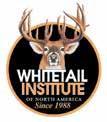
Putting it All Together
As you use these tools or a combination, consider what deer might be doing in areas you already frequent. Also, look at areas that have largely been ignored, especially if they offer overlooked pockets of thick bedding cover. These might be where deer have been escaping your predictable hunting habits.

Of course, garner all new information you can on your own. But don’t be too proud to ask others for help. Consider the historical knowledge you have. Pair that with nuggets of information received by others. Then, combine it for the best thoughts and predictions on what future deer movement will look like. Empowered with that information, begin making necessary land management changes, and enjoy the newfound success on your deer hunting property.

WHITETAIL INSTITUTE HERBICIDE RESULTS RESEARCH EQUALS The Choice is Clear. Our Herbicides are researched and developed to produce high-quality plots. Less weeds means more quality food and simply more deer. ORDER TODAY! 800-688-3030 www.whitetailinstitute.com 239 Whitetail Trail, Pintlala, AL 36043
DOWN AND DIRTY WITH MOCK SCRAPES
One of the quickest ways to locate, pattern and even condition mature buck activity is to use mock scrapes throughout each transitional phase of fall. Here’s how you can maximize this high-impact strategy.
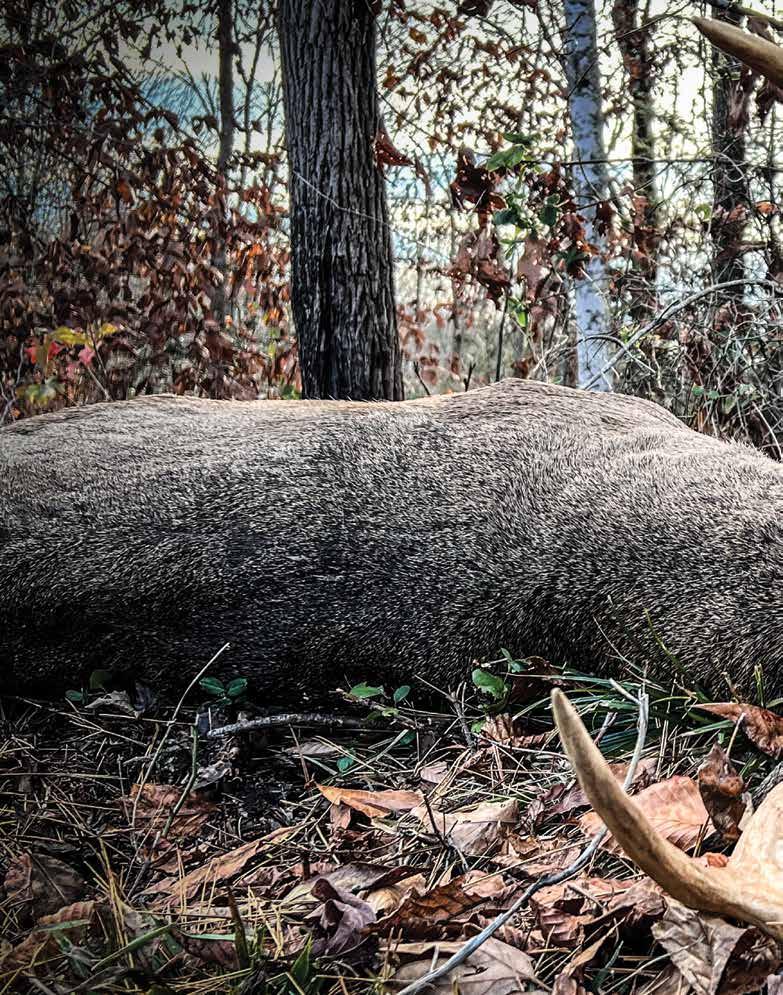 ■ by Travis Faulkner
■ by Travis Faulkner
42 Whitetail News | Vol. 33-2

Vol. 33-2 | Whitetail News 43
My late grandfather used to say that a whitetail buck lives by his nose, and anyone who has tangled with a long-tined giant in fall knows that statement holds a lot of truth. A buck’s keen sense of smell is one of his main lines of defense, and it’s how he interacts daily with his world.
Fortunately, it’s possible to turn that strength into a major weakness you can strategically exploit through creating, monitoring and hunting big bucks over mock scrapes. This is one of my favorite scouting, patterning and hunting tactics on highly pressured tracts of public land and intensely managed private ground. For good reason, mock scrapes produce results throughout the entire season, not just during the much-anticipated rut. With the right steps and techniques, you can use these methods to help keep you on top of shooter bucks from before opening day until the final buzzer. Let’s break down the real dirt on mock scrapes and see how you can add these strategies to your hunting arsenal.
■ After locating ideal overhead branches, clear out the ground beneath them in an oval shape about the size of a small to medium beach ball. Try to find granular soil that can soak up and retain scent for long periods.
Making Realistic and Natural Scrapes
If you want to maximize the productivity of mock scrapes, you need to replicate the real deal. Pay close attention to details, such as the average height of overhanging licking branches, positioning of scrapes, preference of tree-branch types, locations of existing scrapes and texture of the soil. You’ll almost immediately notice that some scrapes stay well established and extremely active throughout the season, but others dry up quickly from minimal use. Directly mimicking the common factors that make scrapes more active will dramatically increase your overall success.
In more than 20 years of making mock scrapes across the country, I’ve noticed that mature bucks seem to prefer an overhanging branch that holds its leaves longer in fall, with lots of sticks and dangling limbs. That lets bucks bite multiple limbs and work their scent directly into the branches. Those overhanging
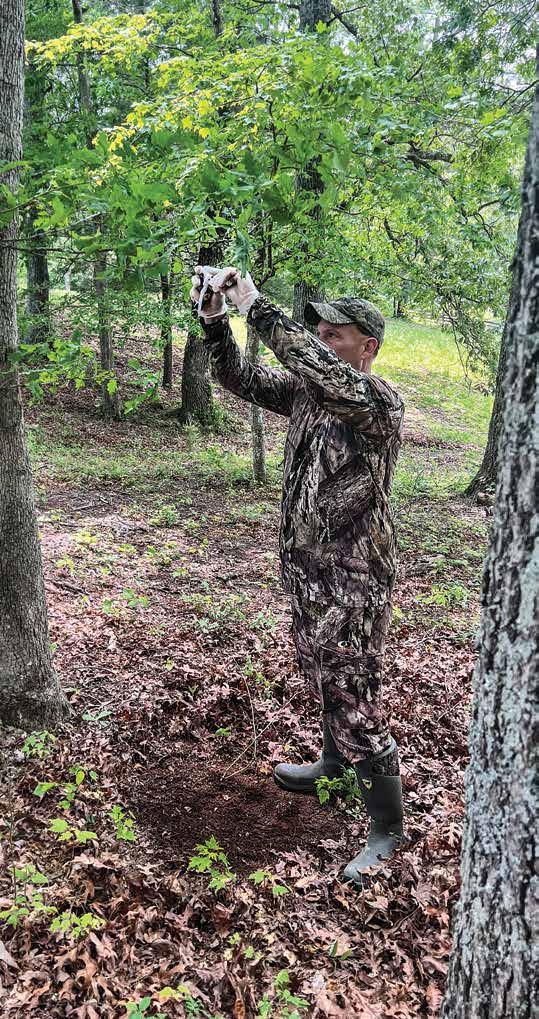
44 Whitetail News | Vol. 33-2
branches retain the scent and disperse the aroma through the wind to cover a wider detection zone. The sprawling leafy branches of beech, sycamore, maple, oak and hickory trees are some of my favorite choices, but grapevine clusters and even cedar or pine limbs can also make very productive mock scrapes. The trick is to select overhanging branches that are about 6 feet high so bucks can really get up under the limbs and thoroughly work their scent glands. Overhead branches that are too low or excessively high will often be less active.
After you locate ideal overhead branches, clear out the ground beneath them to form an oval shape about the diameter of a small- to-medium sized beach ball. Try to find mock scrape setups that offer good dirt, meaning granular-type soil that can soak up and retain scent for extended periods. Avoid soil that’s swampy, muddy, extremely hard, or thin and bone-dry, which can lead to excess erosion and less overall scent retention. Simply use a stick to scrape away dead leaves, sticks and other debris to reach the good soil and apply your preselected scents.
During this process, it’s crucial that you take steps not to contaminate the mock scrape with human scent and other potentially alarming odors. Wear knee-high rubber boots and latex gloves, and take similar precautions with your clothing and gear as you would during an actual hunt. I even spray down zipties, cotton scent wicks, game cameras, straps and scent drippers with an odor eliminator before drying and storing them in separate plastic Ziplock bags placed inside of sealed plastic containers. Doing this will drastically reduce the chances of spooking deer and educating veteran bucks. It also increases the chances of deer using and establishing the mock scrape much faster. This is how a mock scrape becomes an actual active scrape in the shortest time.
Matching Scent with the Season
The scents you apply to a mock scrape vary depending on the transitional phase of the season. Deer routinely use scrapes to communicate throughout the entire year, not just during the breeding phases of the primary and secondary
rutting transitions. You don’t want to send the wrong message by saturating your mock scrape with heavy rut-related scents such as tarsal, rutting buck urine or doe estrus during the early prerut and late post-rut periods. The scent you’re communicating with needs to match the current deer activity and behavior in your area.
Typically, I start making mock scrapes and monitoring those setups with cameras as early as July and continue until the close of season. The only things that really change are the setup locations and type of scent application. With the right tactics, this is a precision scouting, patterning and hunting tool that consistently produces results, especially when coupled with game cameras and high-impact setups. In my opinion, it’s one of the fastest ways to locate a shooter, figure out his pattern and even dictate his movement. This is especially true when scouting and hunting large tracts or new areas that can be somewhat intimidating. If a buck is anywhere near a fresh mock scrape, he will head to it, just like a neighborhood dog goes to a truck tire.
Early Pre-Rut and Late Post-Rut Tips
During the early pre-rut and late postrut periods, deer are not breeding and are focused more on feeding and bedding. Strategically constructing mock scrapes along the edges of current early- or late-season food sources, bedding areas and main travel corridors that connect those prime-time locations is a good start. Pinch points, staging areas, funnels and areas near watering holes are also excellent choices. Only apply non-rut buck and doe urine on the ground and preorbital gland scent to overhead licking branches. You want to communicate a non-threatening message to generate a curious or investigatory response from deer.
After you’ve made several mock scrapes at critical locations, start monitoring those sites with multiple game cameras. Cellular cameras equipped with solar panels or extended battery packs will let you locate potential shooters and establish patterns in real time without having to disturb the area frequently to pull cards and change batter-
ies. With a little work, you can locate a target buck, start piecing together the patterning puzzle and establish a daily routine you can exploit with the right ambush setups.
Primary Rut and Secondary Rut Tips
When whitetails begin focusing more on breeding just before the primary and secondary rut phases, switch up scent-application tactics and setup locations of your mock scrapes. These are the periods to concentrate more on high-traffic doe areas and get more aggressive with your scents. Hanging tarsal glands in overhanging branches and applying dominant buck urine inside a scrape can be deadly. Mechanical scent drippers that are pre-programmed to release scent at specific times can condition a mature buck to work those sites when you can hunt him.
When you start observing actual breeding activity, it’s time to begin adding doe estrus scents to the mix. Mechanical scent drippers filled with rutting buck and doe-in-heat urine blends are very productive. There are even whitetail rut dirt combo mixes that are water resistant and have time-release capabilities to make the scent last longer. In the past, I’ve even taken a small handheld gardening shovel to dig up active scrape dirt from one hunting location and transported it in a sealed plastic bag to create mock scrapes at other hunting spots. This helps add a new degree of realism to your mock scrapes, which can trigger an aggressive reaction from your target buck.
The Mock Scrape Game
The past several years, I’ve relied on mock scrapes to help me locate, pattern and tag mature bucks across several states on private and public land. I have countless game-cam videos and pictures of bucks of all ages, does and yearlings hitting my scrapes from the hot summer days of July until the dead-cold winter days of February. When done correctly, these tactics will help you put more meat in the freezer and more bone on the wall. Don’t be afraid to give them a try this season.
Vol. 33-2 | Whitetail News 45
THE PLOT POWER OF
The impact food plots have is immeasurable, and thanks to more than three decades of Whitetail Institute experience and leadership, the power of the plot is stronger than ever.
 ■ by Kristopher M. Klemick
■ by Kristopher M. Klemick
46 Whitetail News | Vol. 33-2
Brisk mornings and the vibrant fall colors that accompany Pennsylvania’s archery season landscape have always beckoned hunters to the woods. The weather — cool enough to awaken your senses as each new sunrise breaks over the horizon — indulges and welcomes us before winter’s grip begins to take hold.
With the early start to hunting season, archers have ample opportunity to put venison in the freezer, and some are happy taking the first legal deer they can. Me? From the first day I took to the woods with a bow, I’ve viewed archery season as a prelude to the big event — rifle deer season, or as we affectionately call it in Pennsylvania, buck season. Until then, I’m content watching deer saunter past my stand for weeks, guards down, still carelessly going about their summer routines.

Through the years, I’ve awarded countless respectable bucks with the proverbial get-out-of-jail-free card. In hindsight, I probably should have capitalized on a few of those bruisers, but I didn’t, and with that overly selective rationale came quite a bit of razzing from friends and family after they saw the video footage of bucks I’d let walk.
“All in good fun,” I’d think. “At some point, someday, the right buck will paint one of those story-book, picture-perfect mornings.”
The Buck
Four or five years later, the blank canvas was no more. I’ll never forget that first archery buck. I’d hunted hard all season, and with only a few days remaining, I was prepared to carry my antlered tag into our hallowed buck season. For weeks, deer were on high alert. Even rut-crazed bucks were cautiously aware of each sound that broke the silence and every leaf that hit the forest floor. To say they were wired would be an understatement.
A few hours after the chilly November daybreak, the glistening sunrise that had warmed my face and cast its inexplicable snoozing spell over me gently brought me back to consciousness, where in front of me, 35 yards away, stood an incredible Pennsylvania mountain buck, its eyes burning a hole through me. The shimmering rays of sunshine lit me up brighter than a luminated nock flying at last light, and the constant head bobbing that accompanies the don’t-you-daredoze-off diatribe we subject ourselves to soon before checking out for an hour likely gave the buck reasonable assurance that he could slip past me and into the Imperial Whitetail Clover plot beyond my stand.
The bow hung to my right, and as I awaited the dreaded snort and dash that thankfully never came, a gentle flick of the
Vol. 33-2 | Whitetail News 47
tail gave pause for reflection.
“Is this the buck?” I wondered.
He wasn’t a massive-bodied deer, and his headgear placed him among bucks I’d previously passed on through the years. But for some reason, there was no question about it: This was the buck. As he passed over my left shoulder 20 yards away, I slowly stood, reached for the bow and turned around to a perfect broadside shot. Attempting to settle the bobblehead that was my 40-yard pin, I watched as the arrow sailed just underneath the bruiser’s belly, and though he only tore off through the woods another 30 yards, it might as well have been a mile. My hunt was finished.
The buck stopped to look back as I admonished myself for attempting the shot after several failed attempts to gain my composure. Again, we locked eyes, and I gave thanks for the clean miss. He then continued his walk out of my life when, to my amazement, he stopped and turned around. There were no other deer in the plot or advancing to it from any direction. The Imperial Clover was
simply too much, and for the next few minutes, the buck’s attention went back and forth from the location that had nearly cost him his life to the food plot behind me. He tempted fate and closed 100 yards to return to the spot where our paths first crossed. The 20-yard shot sealed the deal, and my first archery buck came to rest just a few yards later along the decade-old stone row that enveloped the plot.
As I knelt beside him giving thanks, recounting how the hunt had unfolded, my mind was flooded with emotions and memories of the bucks that had come before him. I was reminded of the story I shared in this magazine a few years ago (“The Ones That Got Away,” in Issue 29-3), about the second biggest buck I’ve encountered and never drew on.
My first archery buck wasn’t the largest I’ve taken in 42 years, but it was the most meaningful. Not realizing it until that moment, the 9-point marked the ninth anniversary of another 9-point Pennsylvania giant that also could not shake the powerful spell of a Whitetail


Institute food plot. And as if it couldn’t be more foreordained, both were harvested 90 yards apart from one another.
The Power
Food plots put inches on antlers, pounds on the hoof and, ultimately, venison in the freezer, but they aren’t just means to an end. Although we plant them year after year in hopes of encountering a mature buck, food plots provide much more beyond the basic umbrella of nutrition and attraction. They encourage continued stewardship of the land. They stoke the desire we have to learn more about the animals we passionately pursue. They challenge us to do better, not just in the field but in all endeavors. Make no mistake, the impact food plots have is immeasurable, and thanks to more than three decades of Whitetail Institute experience and leadership, the power of the plot is stronger than ever.
48 Whitetail News | Vol. 33-2
■ Food plots put inches on antlers and venison in the freezer, but they aren’t just a means to an end. They encourage stewardship and challenge us to do better.
WHITETAIL INSTITUTE IMPACT
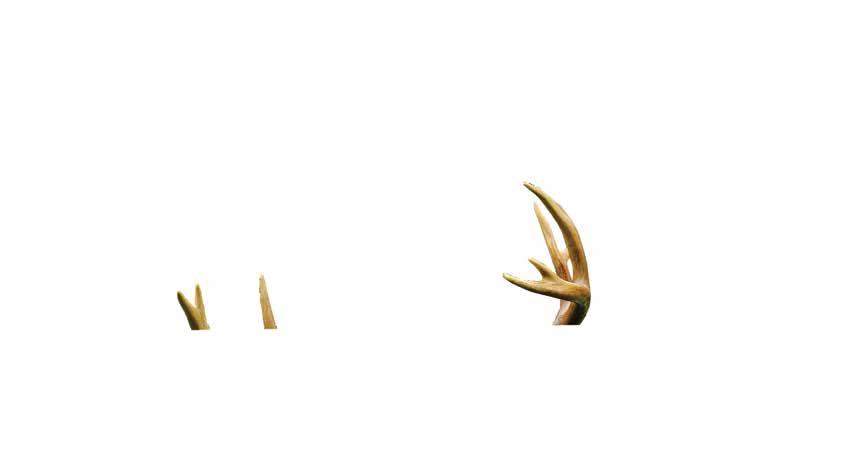


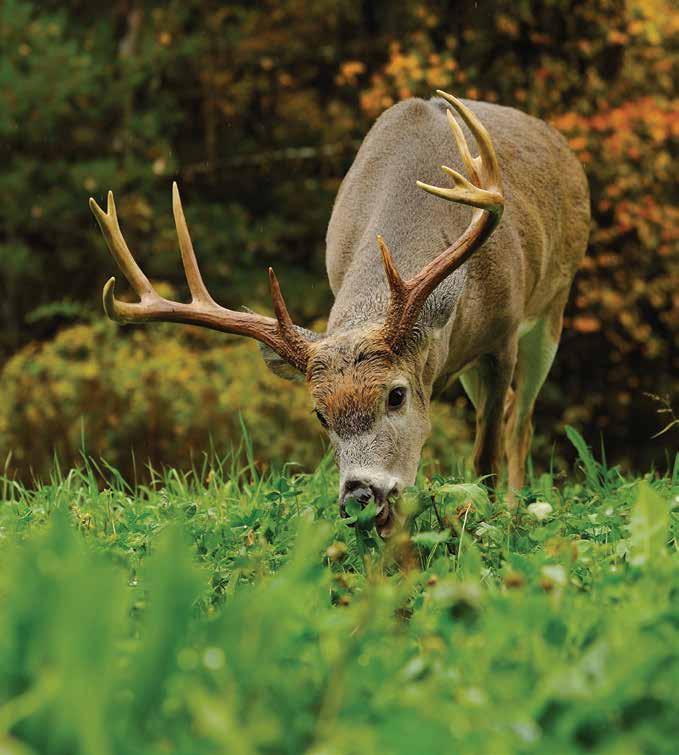
Impact is the next generation soil amendment that releases nutrients and feeds forages in lower pH soils. Turn poor soil or hard to access plots into productive food plots.
Still the leader since 1988
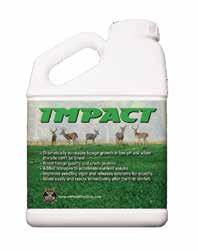
WHITETAIL INSTITUTE 239 Whitetail Trail, Pintlala, AL 36043 • 800-688-3030 • www.whitetailinstitute.com
RESULTS RESEARCH EQUALS
































IMPERIAL WHITETAIL Perennials










Scienti cally designed to attract and grow bigger deer. Includes proprietary seeds developed by Whitetail Institute agronomists. Designed to last up to ve years from a single planting.
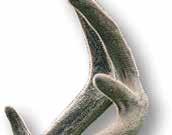
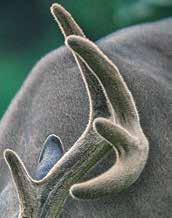
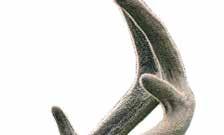
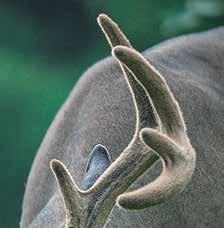































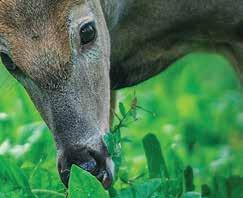

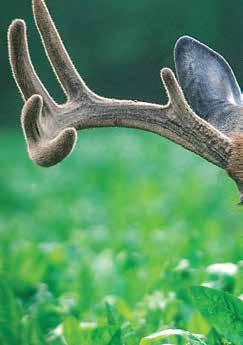

Still the leader since 1988


WHITETAIL INSTITUTE 239 Whitetail Trail, Pintlala, AL 36043 •
• www.whitetailinstitute.com
800-688-3030
PLOT PERFECTION:
A Q&A WITH WHITETAIL INSTITUTE APP DEVELOPER PAUL POTTER
Within the app’s dashboard, you can create a listing for each plot, and then enter all information related to each plot, such as things you plan to do, as well as historical details of everything you’ve done previously. Before I leak too much information, let’s dive into my recent interview with PlotPerfection developer Paul Potter.
Darron McDougal: How and why did you start to develop PlotPerfection?
McDougal
Have you heard about Whitetail Institute’s new app, PlotPerfection? Find out how it can make you a better food plotter. ■ by Darron
Many articles in Whitetail News have discussed how easy it can be to plant a food plot, especially with blends such as No-Plow, Bow Stand and Secret Spot. It can be as simple as testing the soil, exposing it with hand tools and then broadcasting lime, fertilizer and seed. Piece of cake, right?
If you manage multiple food plots, things get more complicated. To make

truly attractive food plots year after year, you must track what you do. Perhaps you have a typed or handwritten journal with information about your food plots. Obviously, organizing current and historical information and then making informed decisions based on that data is possible but can be difficult. Now, however, there’s a better mousetrap. Enter PlotPerfection, Whitetail Institute’s new all-encompassing app for food plotters.
Paul Potter: In the past, I used several different apps to do things like measure plots and compile information. I knew there had to be a better, simpler way. After researching, I learned that no apps existed that would streamline the food plot planning process. As a programmer of more than 30 years, I knew it was time to write an app that streamlines the planning and information compiling processes.
Initially, I imagined that my app would just be for myself and several friends, but when I completed it, people told me
Vol. 33-2 | Whitetail News 51
I had something and should consider making it available to all food plotters. I connected with the Whitetail Institute. Because I did, now anyone can leverage the app’s benefits.
Because I originally created the app for myself, I was somewhat lackadaisical in working on it. The beginning piece of code took me about six months of sporadic programming. In no way was it a structured eight-hour-a-day time commitment. When the Whitetail Institute became involved, it became a more time-intensive project. We had to make sure that everything was seamless for consumers.
DM: What is PlotPerfection, and how can it help food plotters?
PP: I call it a one-stop shop for everything a food plotter needs to keep track of their plots. From soil samples, to lime and fertilizer application, to soil preparation, to what you’ll plant and how much seed is needed, the app covers all bases. Imagery is another big piece. If you like to photograph your food plots and keep a library of images, you can do that within the app. You can even do photo timelines showing each plot’s progression from planting to hunting season. All of those capabilities exist within PlotPerfection. You can have it at your fingertips on the go via your smartphone, or you can use it on a laptop or desktop. You can even use it both ways, as the information flows seamlessly between them.
DM: What are PlotPerfection’s top features and why are they so important?
PP: With fertilizer prices rising, I believe the soil sample piece is highly beneficial. When you enter soil information, the lab generates specific values of what must be done to optimize the soil so you can achieve a top-notch food plot. The app removes the guesswork with its fertilizer calculator, telling you exactly how much you need for the fertilizer you have access to. That is the No. 1 feature in my opinion.
Next, the planning component within PlotPerfection allows you to really dial everything in. The mapping component gives you the exact acreage value of your plot, and that helps you to determine how much seed you’ll need to purchase
based on which Whitetail Institute seed or seed blend you’ll be planting.
You can also stay on top of crop rotations. It isn’t a big deal if you have one or two plots to track, but if you have a handful of plots or more, you have to make smart decisions on rotating so that your soil stays healthy and you achieve optimal results. PlotPerfection makes tracking all of that information over time and being able to reference it far more manageable.
Plus, the soil integration with Whitetail Institute labs is like nothing out there in the food plot industry. It allows easy submission, provides feedback throughout the process, and pulls the results right back into Plot Perfection. It automatically generates lime plans and quickly creates fertilizer plans based on the fertilizers available in your area.
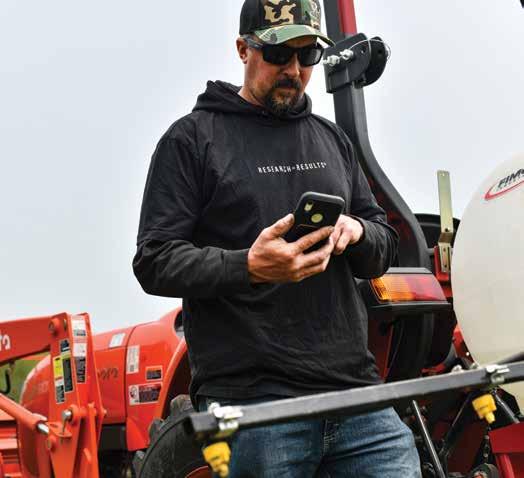
DM: How does someone sign up for PlotPerfection? What if they’re not especially techno-savvy?
PP: It’s really easy. Just open a web browser and go to plotperfection.com. You can subscribe right from the homepage. You’ll receive an e-mail with a verification code so that you can complete your subscription process and begin using PlotPerfection.
Don’t worry if you aren’t technologically inclined. Our pilot group that started using the app has commented on how user-friendly PlotPerfection is. After you’re in there, it’s very easy to navigate and utilize every feature. I’ve purposely gotten some technologically challenged folks to use the app who aren’t even food plotters. They’ve had no trouble with learning how to use the app.
DM: Ultimately, what do you hope PlotPerfection achieves in regard to helping food-plotters?
PP: The overall goal of PlotPerfection and the Whitetail Institute is to make everyone the most successful food plotter they can possibly be and to streamline the planning and information-compiling processes. When you visit the Whitetail Institute’s Facebook page and see the beautiful food plots folks are cultivating, that brings a lot of satisfaction in knowing that we’re educating and equipping folks to build better food plots, which puts deer in front of them.
Editor’s note: For more information or to subscribe to the PlotPerfection app, go to plotperfection.com.
52 Whitetail News | Vol. 33-2
■ PlotPerfection streamlines the planning and informationcompiling process necessary to grow great food plots.
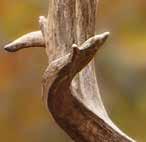
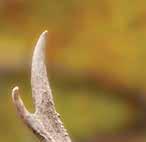


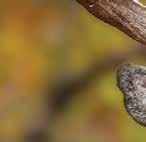




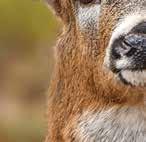

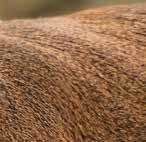




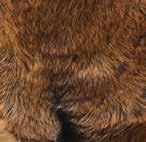














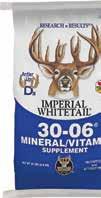
















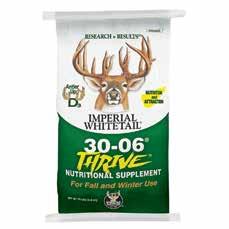

and vitamin supplementation is vital for maximum antler growth. 30-06 mineral and vitamin supplements are scientifically designed and professionally formulated to provide maximum deer nutrition. 30-06 products are also extremely attractive to whitetails. (30-06 products might be considered bait in some states. Check your local game regulations before using or hunting over 30-06.)
the leader since 1988 WHITETAIL INSTITUTE SUPPLEMENTS WHITETAIL INSTITUTE 239 Whitetail Trail, Pintlala, AL 36043 • 800-688-3030 • www.whitetailinstitute.com
RESULTS RESEARCH EQUALS Mineral
Still
by Jody Holdbrooks
The Next Level consulting crew will examine proven tactics to maximize your land’s potential. ■
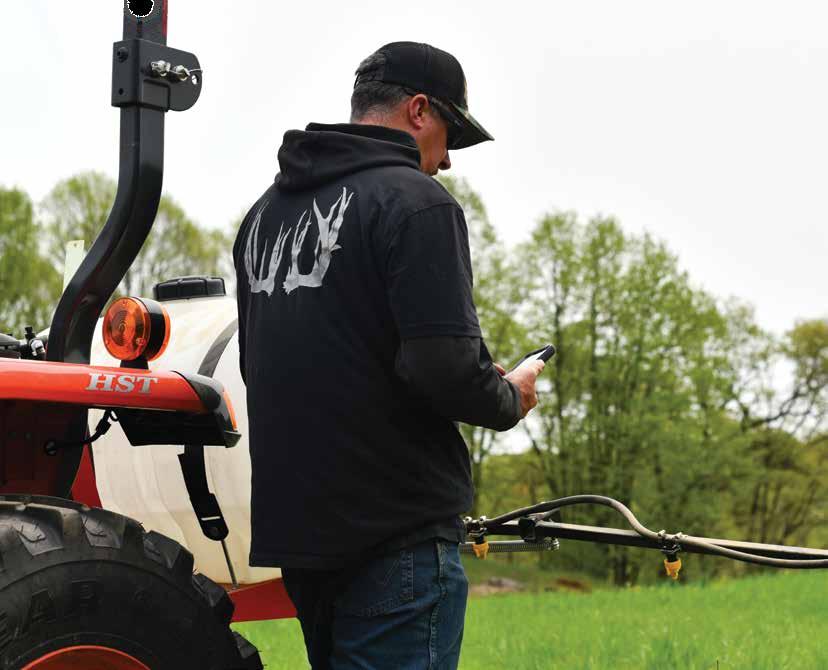 WHITETAIL INSTITUTE CONSULTING:
WHITETAIL INSTITUTE CONSULTING:

LET US HELP YOU
The Basics
Every property is different, and what works at Property A might not fit Property B. We start by examining the habitat to determine what can be done to improve it for wildlife. Issues we consider include:
A. Timber cutting, including thinning or creating cutovers.

B. Deer herd numbers. This is very im
Deer Herd Numbers
Being from the South, I have properties where I might see five deer one day and 25 the next. It’s all about being mindful of the wind direction and hunting between cover and food. Deer numbers can negatively affect a hunt. The buck-to-doe ratio can get out of whack. That results in easy breeding and less hoof time for mature bucks. That’s a problem many of us face, and we need to look seriously at herd management to get the most out of our hard work. You can introduce the concepts I mentioned, but if you don’t control your deer population density to lessen the buck-to-doe ratio, your bucks will never reach their true potential.
What Kind of Natural Food is Available
The quality of native vegetation is important on any property. Whether you have hardwoods, pines or a mixture, the quality and consistency of food available to whitetails is very important. Acorns are really all you get from hardwoods, and pines can be a monoculture unless you’re thinning them and fire has been introduced. Fire can also be used in hardwoods if the canopy is open. It will produce new plants that will help way more than acorns alone.
Prescribed Fire
This is the cheapest wildlife management tool. Prescribed fire can also be the most beneficial method of wildlife management. Whether you get certified or hire this out, it will be one of the best decisions you make — if done correctly, following proven rules, or hiring a good, experienced crew. The number of native grasses, legumes and forbs that can flourish after a fire can greatly increase natural tonnage whitetails and other wildlife have for food and cover. A solid thin-and-fire approach will also give turkeys and quail improved nesting and brood rearing habitat. It opens up the canopy and gets sunlight to soil, where fire has burned off layers of leaves and needles that have might prevented new growth for years.
Food Plots
Used correctly on the right property, food plots are a true supplemental food source that attracts deer. When you supply a smorgasbord of perennials such as Fusion and surround it with plots of Winter-Greens, Beets and Greens or Tall Tine Tubers, you’re supplying an unbeatable combination of tonnage and attraction for deer. Planting Pure Attraction in my kill plots has been a great addition to my setup. I’m also a huge fan of planting Oats Plus as a nurse crop with Imperial Whitetail Clover, Fusion or any other fall-planted perennial. This will work with any perennial. It gives deer a food source while letting the perennial establish and develop its root system. On some places, food plots are the only answer because of the property’s size or shape. At others, food plots simply attract wildlife. I can answer that question by looking at maps and walking and studying your property.
Soil Testing
The characteristics of your soil can be the most important piece of the wildlife puzzle. Soil quality and health determine how crops grow and survive to produce the end result, which is food for wildlife. Soil health can be determined at the food plot level by sending our labs a soil test of each food plot. I recommend taking as many soil tests as you have food plots. You will need one soil test per food plot — no skimping. The soil on a property can change from one ridge to the next. Soil health can drive the overall conditions that determine buck size and how much nutrition deer can gain throughout the year. We can help you understand your soil tests.
Conclusion
These are just a few of the items that seem to work rapidly and consistently to produce better habitat on a property. Not all properties can sustain all of these habitat changes, but I’ll investigate all of them when I visit your place.
You can contact me at (205) 269-5228 to talk about setting up a visit from Whitetail Institute’s Next Level Consulting.
Vol. 33-2 | Whitetail News 55
THE AMBASSADORS
■ My good friend Todd Handeland and I are avid Whitetail Institute food plotters and habitat management constituents. We harvested great bucks from our Whitetail Institute plots this past year and wanted to share them with you.
Todd hunts in North Dakota and harvested the nontypical pic-


tured here. It grossed 211-4/8 inches B&C. He took it with his rifle on the last day of the season.
I shot my 10-point typical over a Tall Tine Tuber plot with my bow in southwestern Wisconsin. It rough-scored 155 inches.
The third photo shows my buddy from Louisiana, who came up this past fall and harvested a mid-140s 10-point off my Fusion perennial plot from our southwestern Wisconsin farm.


We have a running joke that we are ambassadors of the Whitetail Institute because we wear your hats everywhere and are constantly talking about food plots and deer hunting.

56 Whitetail News | Vol. 33-2 MY TROPHY WHITETAILS
NICK BREIER | WISCONSIN
T-JIM | LOUISIANA
IMPERIAL WHITETAIL PLEASE SCAN HERE AND TAKE A QUICK SURVEY • https://whitetailinstitute.com/field-tester-survey/
TODD HANDELAND | WISCONSIN
■ As much as I hate to admit it, I’ve used so many products with minimal results for so many years, with no soil tests, a lot of Roundup and moderate tillage. Some came up really well, but others were just so-so. Now in the past eight years or so, I have much better equipment, conduct soil testing, use more specific types of weed control through tillage, and only use certain products. The results are much better. Our deer are much larger, and we have more fawns in spring. I use Imperial Whitetail Clover, Fusion, Winter-Greens and some Oats. Our fields look a lot better, and we have more bucks.
GREG KAYE | NEW YORK
■ Whitetail Institute’s Tall Tine Tubers produced again in early October. Even before the first frost, the deer hammered the tops, providing my daughter with an opportunity for her first buck, taken during the youth hunt.
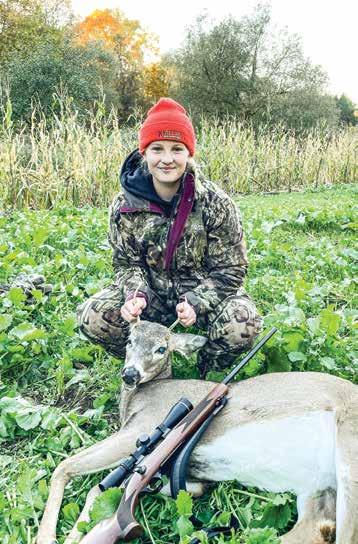


■ I have a 76-acre parcel in northwestern Pennsylvania. There is a lot of agriculture around our place, but we are mostly wooded with a large pond.

When we bought it, all the deer movement was random and primarily at night. Without the food and cover deer prefer, it was a pass-through, as they traveled from one large farm field to another. We have transformed the property with lots of support from family and friends to add clearings converted to food plots and timber stand improvement projects. We now have well established bedding areas relating to our numerous food plots and defined travel patterns throughout the season. The soil is heavy clay and holds a lot of moisture, and we have determined that Whitetail Institute’s Imperial Clover is a standout for our plots. When starting a new plot, we plant Imperial Clover with Beets and Greens or Tall Tine Tubers as a first-year brassica planting to allow the clover to establish. This works fantastic to get the Imperial Clover established, and it thrives in the soil for three to four more years before we start another rotation.
This past fall, we purchased the adjoining property of 60 acres, primarily because it has an old cattle pasture of about 13 acres. We plan to convert the pasture to multiple food plot areas using Whitetail Institute products. It will be split into several 2-acre plots for our rotations between annuals and perennials, with Conceal mixed throughout to screen the plots from each other and our entry and exit routes. Whitetail Institute products have
Vol. 33-2 | Whitetail News 57
MICHAEL CAHILL | Pennsylvania
CRAIG FISH | ILlinois
■ I started planting food plots in 1983 — milo, wheat and soybeans — and had fair success. It was the same as every field around our farm, only in larger fields. Using Whitetail Institute products provided the deer with a true smorgasbord to feed on.

This past year in Kansas, 2022, we were in the worst drought in decades. The creek quit running, and the ponds dried up. We experienced 32 days of 100-degree temperatures and still no rain. The Whitetail Clover and Alfa-Rack would have to wait. The fields were ready, and panic was setting in. My wife, Thelma, suggested we use our last bag of Imperial Whitetail Oats Plus and mix it with leftover winter wheat, load it into our drill and then dust it in. The idea was to reduce our losses. Thirty days later, we were blessed with 1.75 inches of rain, and the oats jumped out of the ground.
We had a 9-year-old buck I had hunted hard for the past five years, and he was going downhill. He loved the Whitetail Oats. Thank the Lord they grew. He was very nocturnal, but the oats were his downfall. I was blessed to harvest the 10-point while he was in the 200-inch range. My wife took down this really nice 14-point. Whitetail Oats have been and will always be my go-to for fall planting.
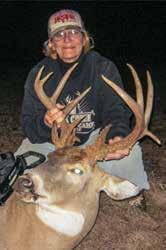
■ I help manage a property in south-central Pennsylvania. We have used Whitetail Institute products off and on since the late 1990s. In recent years, I have been using Whitetail Institute products more often.

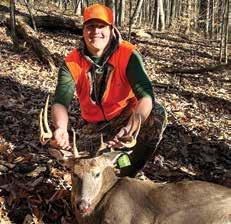
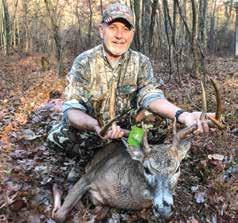
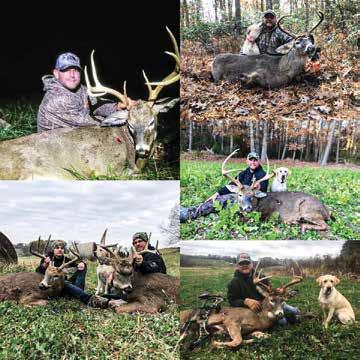
Our food plots consist of mostly clover in a four- to five-year rotation. The total amount of tillable acreage is 5.5 acres. The total huntable acreage is about 900 acres.
During the past few years, we’ve had an increase in deer population and quality of antler growth because of the availability of quality forage in spring and summer. Our wild turkey population has increased dramatically during the past three years, and we attribute that also to quality forage and cover for poults.
We have been seeing and harvesting more quality, mature bucks in recent years because of our food plot efforts and plan on keeping [deer] full of Whitetail Institute forage options.
KYLE GILSON | New Jersey
■ Whitetail Institute of North America — if you’re not planting its products, you might want to. Best in the business. The results speak for themselves. I have been using Whitetail Institute products for close to 27 years, and my grandpa was using them before that. Great company, super informative and awesome products. That’s exactly why I tell my clients about Whitetail Institute products.
58 Whitetail News | Vol. 33-2
SEAMUS LICHLYTER | KANSAS
JOHN GEORGE | Pennsylvania
MY TROPHY WHITETAILS
■ Flexible, detailed journal allowing food plotters to keep historical and current information about all their food plots
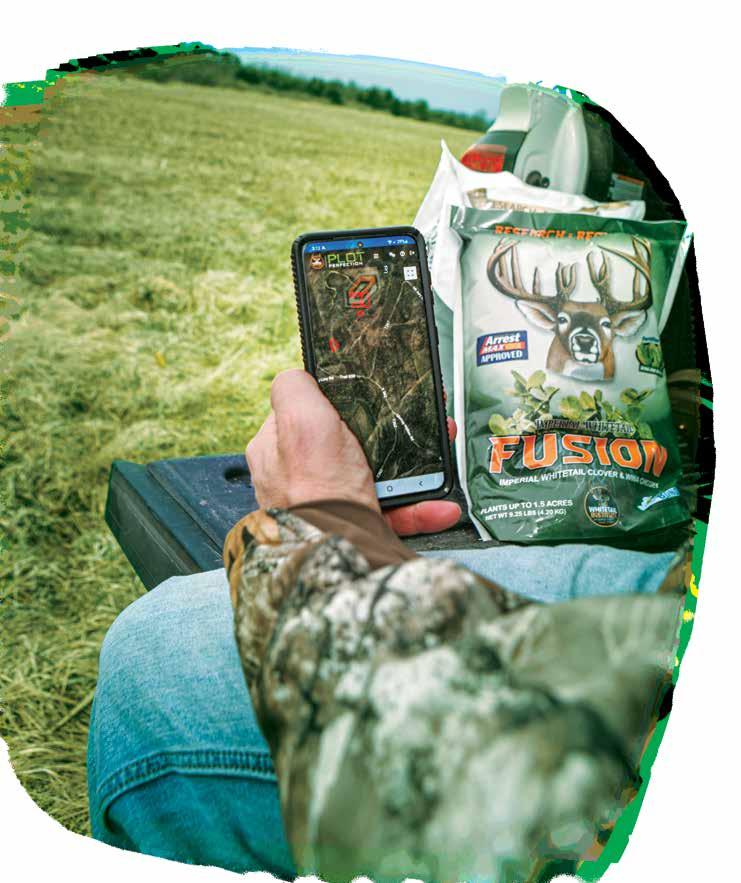
■ Seamless way for users to track food plot work, results, and trends over time

■ Outstanding planning tool for future food-plot tasks
■ Everything from integrated mapping to soil amendment and seeding information
■ Connected to our Whitetail Institute laboratories for easy submittal of soil tests

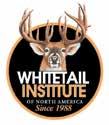
■ Soil test results appear in Plot Perfection

■ One stop shop for all your food plotting needs and a first of its kind app

SUBSCRIBE TODAY! Receive 2 Downloadable Soil Tests FREE value of $23.90 Visit https://plotperfection.com today or call 1-800-688-3030, and begin building your food plot journal. WATCH TUTORIAL VIDEO HERE: Subscribe TODAY at www.PlotPerfection.com
■ My deer herd has blown up. We have more twins, bigger bodies and more antler mass, and the turkeys have exploded. It just plain works.

■ I got interested in taking my hunting to the next level. I have a 3-acre food plot and have been using your products now for two years, and they have produced, helping me kill a 143inch buck. I am looking forward to the next couple of months to get some ground worked up and food plots planted. I watched that buck since June and killed him the second week of November. I nicknamed him “Buttons.”
■ I have used Whitetail Institute products for more than 20 years, and I have never been disappointed. I have more deer and turkeys than ever before, and they live on my property year-round. I have seen a steady increase in antler size and body weights. These products have helped me grow bigger deer than our county is known for.
AARON PERRY | OHIO
■ The first product I used was Apple Obsession to mix with my corn. I have been hooked and buy three bags a year now. And I have recently started building food plots with my friend at his property. Here are a few of the bucks we have killed using Whitetail Institute products.
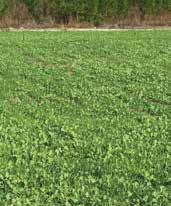
■ Since using Whitetail Institute products, my hunting property holds more deer. I have bigger bucks and better results. Whitetail Institute products are the bomb. I wouldn’t use any other product. I’ve had 28 years of enjoyment using Whitetail Institute products. I killed my biggest buck (152 inches) in Georgia over a No-Plow food plot mixed with Pure Attraction.
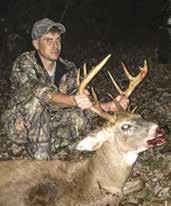

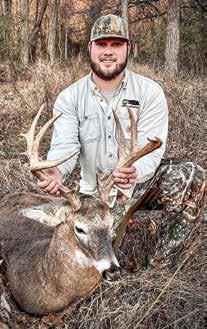


60 Whitetail News | Vol. 33-2
DEWAYNE MIKEL | TENNESSEE
MY TROPHY WHITETAILS
TAYLOR MORGAN | WEST VIRGINIA
MIKE MOSTEK | georgia
GERALD ROZAK | wisconsin

■ I started using Winter Greens in 2016 and Tall Tine Tubers and Fusion in 2017. Since then, I’ve started to see more bucks and, better, bigger bucks. I love Fusion to hold deer on our 40 acres in summer and Winter Greens and Tall Tine Tubers for the hunting season.
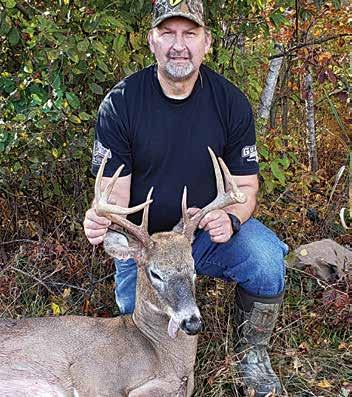
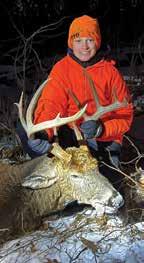
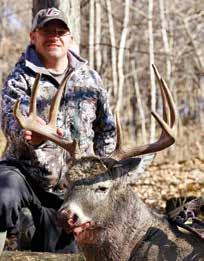

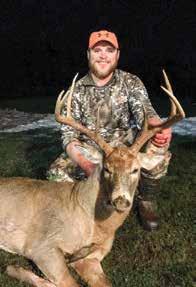

■ 2022 was a year we will never forget. On Halloween morning, I harvested a 5-year-old 8-point that had grown up on our farm eating Whitetail Institute products. On Nov. 20, my son killed a 5-year-old 159-inch buck we called “Stickers.” Again, this buck was frequently on our farm eating Whitetail Institute products during its lifetime. I can’t thank your company enough. Whitetail Institute products, in my mind, are second to none.
■ The benefits of Whitetail Institute’s products far exceed those of other brands I’ve used through the years. With the Whitetail Institute soil test and the addition of Plot Perfection, this makes planning a successful food plot so much easier. I currently plant 6 acres of food plots and will continue to use Whitetail Institute products for years to come. Whitetail Institute products have allowed my children and me to have successful hunts every year.

Vol. 33-2 | Whitetail News 61
JEREMY M C BROOM | Minnesota
MY TROPHY WHITETAILS
JASON HAGA | tennessee
MICHAEL BODRI | minnesota

■ We started using Whitetail Institute products in 2014 and have grown to love Tall Tine Tubers for late-season plots. The snow that we get in early November really turns the deer onto digging for the bulbs, which coincides with our rifle season. My dad and I have harvested bucks the past several years, with most of them headed toward our turnip patches. It has gotten to the point where our neighbors, who farm hay and oats on their fields, are asking us to please plow up our turnip plots so they can see deer as well during the season.
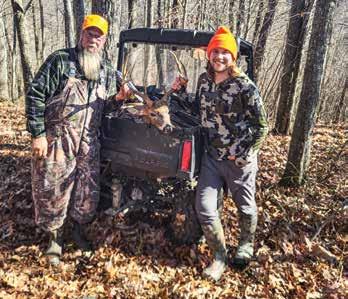

■ My father was finally able to buy his dream piece of property to manage and hunt. We have been using Whitetail Institute products in all of our food plots and have seen tremendous growth in the deer herd. We have seen a large increase in deer numbers and body size the past four years. Antlers are growing, too. We look forward to many years of success and the memories that follow.

62 Whitetail News | Vol. 33-2
JAMES RHOTEN | Virginia

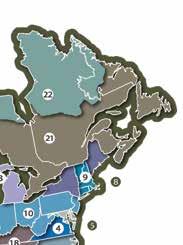
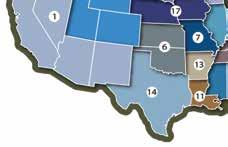



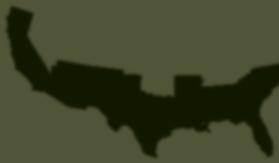


























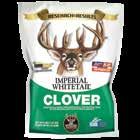

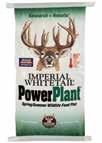
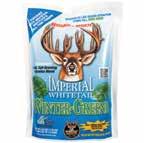
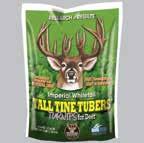


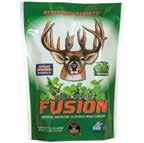
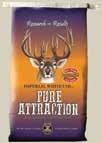
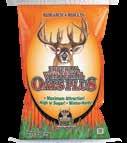


ORDER TODAY! DISCOUNT COUPONS SHIPPING INCLUDED IN PRICES IMPERIAL WHITETAIL EXTREME $246.98 + tax Suggested Retail $289.96 — (46 lb.) quantities of Imperial Whitetail EXTREME TOTAL (Add 7% Sales Tax) $ 46 LBS.-2-ACRE PLANTING IMPERIAL WHITETAIL CONCEAL $119.98 + tax Suggested Retail $139.99 — (28 lb.) quantities of Imperial Whitetail Conceal TOTAL (Add 7% Sales Tax) $ 28 LBS.-1-ACRE PLANTING IMPERIAL WHITETAIL FUSION $246.99 + tax Suggested Retail $289.96 — (27.75 lb.) quantities of Imperial Whitetail Fusion TOTAL (Add 7% Sales Tax) $ 27.75 LBS.-4.5-ACRE PLANTING $114.98 + tax Suggested Retail $120.00 — (50 lb.) quantities of Imperial Whitetail PowerPlant TOTAL (Add 7% Sales Tax) $ 50 LBS.-1.5-2-ACRE PLANTING IMPERIAL WHITETAIL PURE ATTRACTION $84.98 + tax Suggested Retail $89.97 — (39 lb.) quantities of Imperial Whitetail Pure Attraction TOTAL (Add 7% Sales Tax) $ 39 LBS.-.75-ACRE PLANTING IMPERIAL WHITETAIL WINTERGREENS $189.98 + tax Suggested Retail $219.96 (24 lb.) quantities of Imperial Whitetail Winter-Greens TOTAL (Add 7% Sales Tax) $ 24 LBS.-4-ACRE PLANTING IMPERIAL WHITETAIL “CHIC” MAGNET $99.99 + tax Suggested Retail $139.94 — (9 lb.) quantities of Imperial Whitetail “Chic” Magnet TOTAL (Add 7% Sales Tax) $ 9 LBS.-3-ACRE PLANTING IMPERIAL WHITETAIL OATS PLUS $69.00 + tax Suggested Retail $79.98 — (45 lb.) quantities of Imperial Whitetail OATS Plus TOTAL (Add 7% Sales Tax) $ 45 LBS.-1/2-ACRE PLANTING IMPERIAL WHITETAIL Clover $249.99 + tax Suggested Retail $279.96 — (36 lb.) quantities of Imperial Whitetail Clover TOTAL (Add 7% Sales Tax) $ 36 LBS.-4.5-ACRE PLANTING YOU SAVE $29.97 YOU SAVE $20.01 YOU SAVE $5.02 YOU SAVE $29.98 YOU SAVE $42.98 YOU SAVE $42.97 YOU SAVE $4.99 YOU SAVE $39.95 YOU SAVE $10.98 IMPERIAL WHITETAIL POWErPLANT IMPERIAL WHITETAIL TALL TINE TUBERs $164.98 + tax Suggested Retail $199.96 — (24 lb.) quantities of Imperial Whitetail Tall Tine Tubers TOTAL (Add 7% Sales Tax) $ 24 LBS.-4-ACRE PLANTING YOU SAVE $34.98 IMPERIAL WHITETAIL ALFARACK PLUS $246.98 + tax Suggested Retail $289.96 — (33 lb.) quantities of Imperial Whitetail Alfa-Rack Plus TOTAL (Add 7% Sales Tax) $ 33LBS.-2.5-ACRE PLANTING YOU SAVE $42.98 SOLD OUT! Call1-800-688-3030opt1topre-bookfor2024 SOLD OUT! Call1-800-688-3030opt1topre-bookfor2024 IMPERIAL WHITETAIL Beets & Greens $189.98 + tax Suggested Retail $219.96 (24 lb.) quantities of Imperial Whitetail Beets & Greens TOTAL (Add 7% Sales Tax) $ 24 LBS.-4-ACRE PLANTING YOU SAVE $29.98
IMPERIAL


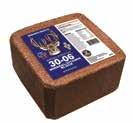

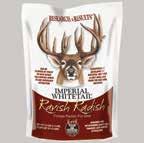

—
Suggested



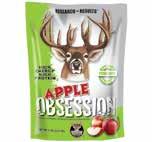
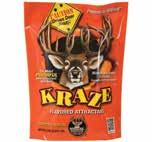
SHIP TO: Name: Address: City: State: ZIP: Phone: Email: Whitetail Institute MAIL TO: 239 Whitetail Trail, Pintlala, AL 36043 CALL TOLL FREE: 800-688-3030 • www.whitetailinstitute.com Payment: ❑ Check or Money Order enclosed Charge to: ❑ Visa ❑ Mastercard ❑ Discover ❑ AMEX Credit Card: Exp. Date: Sec.Code: Signature: (No PO Boxes, Cannot Ship to Canada) IMPERIAL WHITETAIL KRAZE $42.98 (4) pak Suggested Retail $52.99 $59.99 (6) pak Suggested Retail $75.99 + tax — (4) 5lb bags @ $42.98 — (6) 5lb bags @ $59.99 TOTAL (Add 7% Sales Tax) $ IMPERIAL WHITETAIL Apple obsession $49.96 (4) pak Suggested Retail $57.96 $69.96 (6) pak Suggested Retail $80.96 + tax — (4) 5lb bags @ $49.96 — (6) 5lb bags @ $69.96 TOTAL (Add 7% Sales Tax) $ ARREST MAX HERBICIDE • 1 PINT-1 ACRE • 1/2 GALLON-4 ACRES IMPERIAL WHITETAIL IMPACT SOIL AMENDMENT • 8.5LBS - .5 ACRES • 25.5LBS - 1.5 ACRES — (8.5lbs) of Impact $59.99 — (25.5lbs) of Impact $149.94 TOTAL (Add 7% Sales Tax) $ + tax $59.99 (8.5lbs) Suggested Retail $80.00 $149.94 (25.5lbs) Suggested Retail $169.95 SLAY HERBICIDE • 4 OZ.-1 ACRE • 1 PINT-4 ACRES IMPERIAL WHITETAIL No-PLOW $119.98 + tax Suggested Retail $154.96 — (36 lb.) quantities of Imperial Whitetail No-Plow TOTAL (Add 7% Sales Tax) $ 36 LBS.-2-ACRE PLANTING YOU SAVE $34.98 YOU SAVE UP TO $16.00 YOU SAVE UP TO $11.00 YOU SAVE UP TO $20.01 YOU SAVE UP TO $19.02 IMPERIAL WHITETAIL RAVISH RADISH $79.96 + tax Suggested Retail $94.96 — (10 lb.) quantities of Imperial Whitetail Ravish Radish TOTAL (Add 7% Sales Tax) $ 10 LBS.-1-ACRE PLANTING YOU SAVE $15.00 IMPERIAL WHITETAIL DESTINATION $129.98 + tax Suggested Retail $137.02 — (36 lb.) quantities of Imperial Whitetail Destination TOTAL (Add 7% Sales Tax) $ 36 LBS.-1-ACRE PLANTING YOU SAVE $7.04 IMPERIAL WHITETAIL 30-06 block $34.98 (one block) Suggested Retail $39.95 $57.98 (two blocks) Suggested Retail $69.95 + tax — (2) -Pak blocks @ $57.98 — (1) -Pak blocks @ $34.98 TOTAL (Add 7% Sales Tax) $ YOU SAVE UP TO $11.97 pint(s) of Arrest Max Herbicide 1/2 gallon(s) of Arrest Max Herbicide TOTAL (Add 7% Sales Tax) $ + tax $56.99 (1 pint) Suggested Retail $69.99 $159.99 (1/2 gallon) Suggested Retail $169.00 4 oz. of Slay Herbicide pint(s) of Slay Herbicide TOTAL (Add 7% Sales Tax) $ + tax $57.98 (4 oz.-1 acre) Suggested Retail $72.99 $149.98 (1 pint-4 acres) Suggested Retail $169.00
Magnet Mix Block $32.99
WHITETAIL
(one block)
Suggested Retail $39.95 $57.98 (two blocks)
Suggested Retail $69.95 + tax
(2)
(1)
$
-Pak blocks @ $57.98 —
-Pak blocks @ $32.99 TOTAL (Add 7% Sales Tax)
YOU SAVE UP TO $11.97 YOU SAVE UP TO $13.00
WINTER PEAS PLUS $129.98
IMPERIAL WHITETAIL
+ tax
TOTAL
$
LBS.-1-ACRE PLANTING
Retail $149.96 — (44 lb.) quantities of Imperial Whitetail Winter-Peas Plus
(Add 7% Sales Tax)
44
YOU SAVE $19.98
BACK-40 NOTEBOOK
■ Brian Lovett~Whitetail News Senior Editor


PHOTOGRAPHIC MEMORIES
Trail cameras provide more than big-buck images. They offer bits and pieces of the complex workings of our land and the animals that inhabit it.
Monitoring trail cameras might be the most enjoyable aspect of land management. I know very few hunters or landowners who don’t get a kick out of viewing images of deer and other critters at their properties.
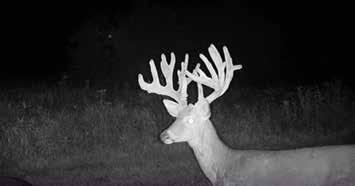
But as much as trail cameras reveal, pieces of their story are shrouded in mystery. Sure, they provide proof of an animal’s existence and whereabouts at a specific time. And with enough supporting intel — other photos, scrapes, rub lines or in-field observations — they can help piece together the puzzle of a deer’s routine. Sometimes, though, images merely prompt more questions.
Like that dandy 10-pointer that appeared seemingly from nowhere this past year and showed up during daylight at a small food plot in the timber. I’d seen no images of him previously, yet there he was, nibbling brassicas and standing broadside 15 yards from a ladder stand … while I was 10 minutes away duck hunting. Had a neighbor bumped him? Did the first real cold front of October prompt the buck to get on its feet? And where did he go after that? We might have caught a couple of pictures of him during the rut, but that was it. Speaking of the rut, there’s probably no more perplexing period to view images. Cameras that have captured nothing but does, fawns and small bucks from summer through mid-autumn suddenly come alive with photos of “new” deer. For weeks, the memory card reveals nothing. Then, overnight, a gigantic old deer gets his selfie taken a half-dozen times, running does up and down a creek bed or even during daylight in a big food plot. That’s great news, for sure, but you’d better act quickly. When lockdown arrives, those images cease, and you’re back to the same mundane pics you reviewed before the rut. In my neck of the woods, that brief camera lull often extends into the firearms season, when most images are snapped at night and deer seemingly go underground because of human pressure. That is, of course, until the third morning of the season, which I haven’t hunted the past two years. During each of those years, a shooter buck appeared during daylight on camera near two stands. The images, although welcomed, led to much groaning and hand-wringing.
The reach of cameras extends beyond whitetails, of course. In fact, from a broader scope, that might be their greatest appeal: seeing the daily, weekly and annual flow of activity at your land while you’re not there, or revealing scenes you’d
rarely witness firsthand. Turkeys are common photo-bombers, and because many deer hunters double as gobbler geeks, those pictures are always exciting. Conversely, predators also make frequent appearances. Coyotes constantly trip cameras day and night, and depending on where you live, black bears also show up regularly. Bobcats might be a bit more shy, but cameras capture them, too. Now and then, flashes of owls and other raptors appear, often swooping down in a field or woods to catch a meal or perhaps just zipping by the lens. Squirrels, raccoons and possums might be the bane of every trail-cam operator. There’s nothing like seeing a card holds 1,000 images only to discover that frisky bushytails are responsible for 900 of them. Time to move that camera.
Trail-cam operators themselves might make the most humorous photo subjects. It’s interesting to see a picture of yourself walking to a stand in the dark — especially if the camera shows there was a good buck standing there minutes before you arrived. One gun season, a camera near my gun stand captured a great sequence of two decent bucks sparring for more than a half-hour. They suddenly stopped at about 5:45 a.m. — you guessed it — just as I walked across the camera’s view and into the stand. I’m pretty sure I never saw a buck that day, and I later learned why.
Ultimately, cameras are just good fun. I can’t wait to see what mine have captured since my last visit. And I’m eager to see what they’ll catch this coming year. One season, they’ll help me shoot a good buck. Until then, I’ll be happy for the entertainment and education they provide during life’s smaller moments.
66 Whitetail News | Vol. 33-2
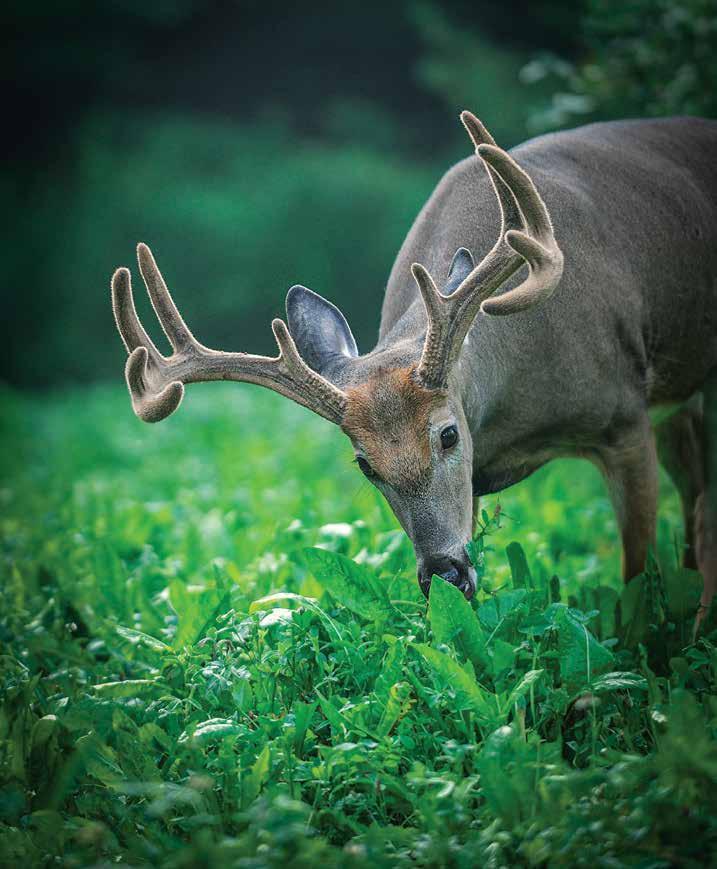

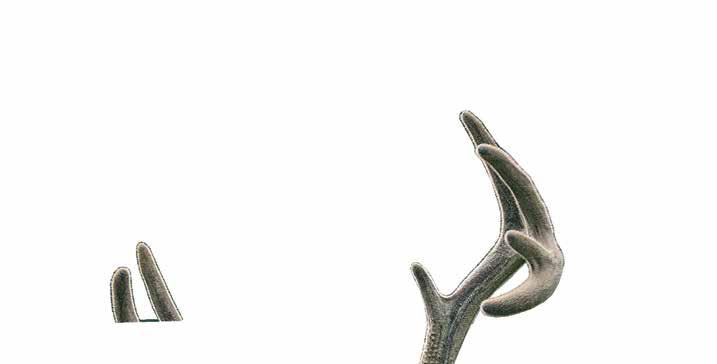
we started the food plot revolution and over 30 years later, we continue to leaD WHITETAIL INSTITUTE 239 Whitetail Trail, Pintlala, AL 36043 *Whitetail Institute’s extensive research and development network includes deer hunters, universities, farmers and seed producers around the world allowing us to discover new and improved forages. Our research, develop ment and testing is conducted within our system of Certified Research Stations and field testers across North America. This unique process lets us subject our forage blends to the harshest critics of all – Mother Nature, real hunters and wild, free-ranging deer all across North America.
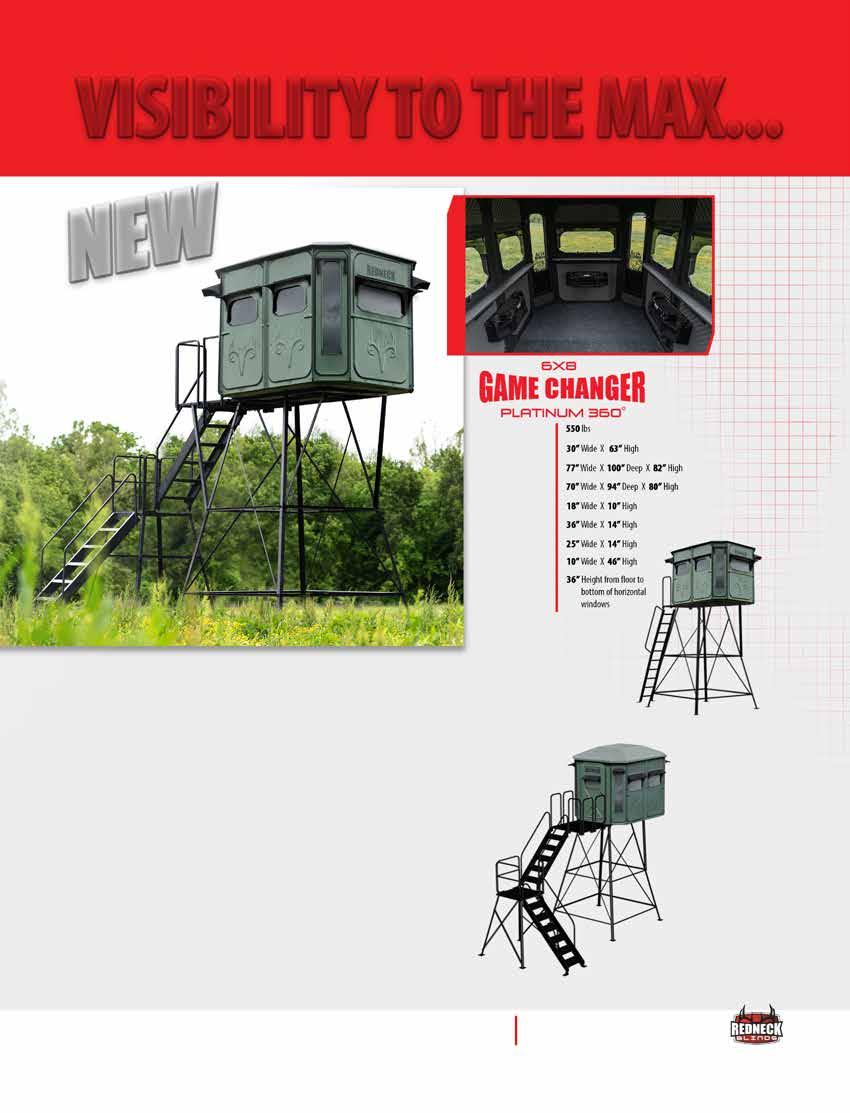





































 — William
— William






































 ■ by Matt Harper
■ by Matt Harper



 ■ by Scott Bestul
■ by Scott Bestul


















 ■ by Darron McDougal
■ by Darron McDougal

































 ■ by Josh Honeycutt
■ by Josh Honeycutt






 ■ by Travis Faulkner
■ by Travis Faulkner


 ■ by Kristopher M. Klemick
■ by Kristopher M. Klemick

































































 WHITETAIL INSTITUTE CONSULTING:
WHITETAIL INSTITUTE CONSULTING:















































































